

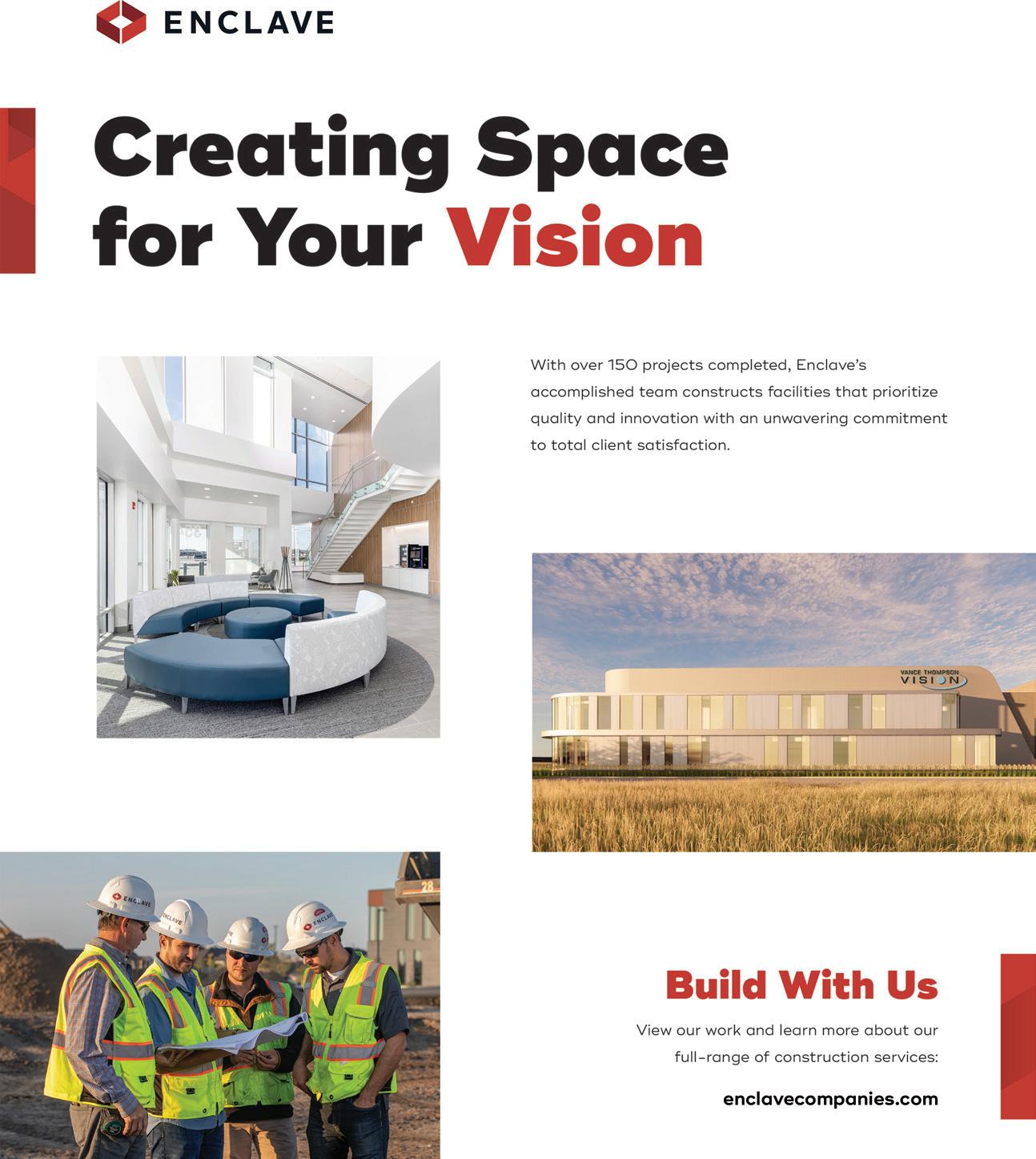









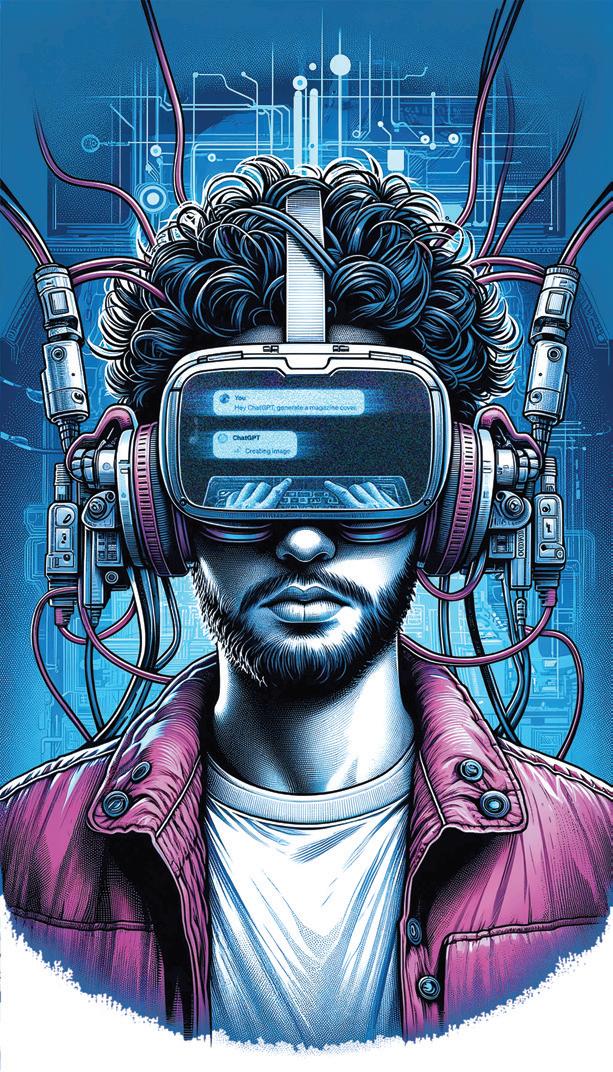






All our stories in one place

Business events calendar

Read all the past issues























All our stories in one place

Business events calendar

Read all the past issues
















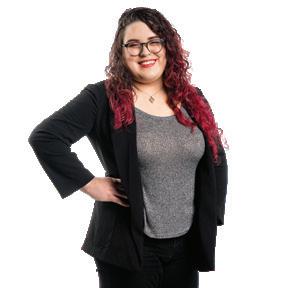













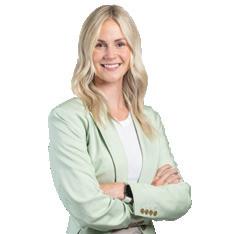



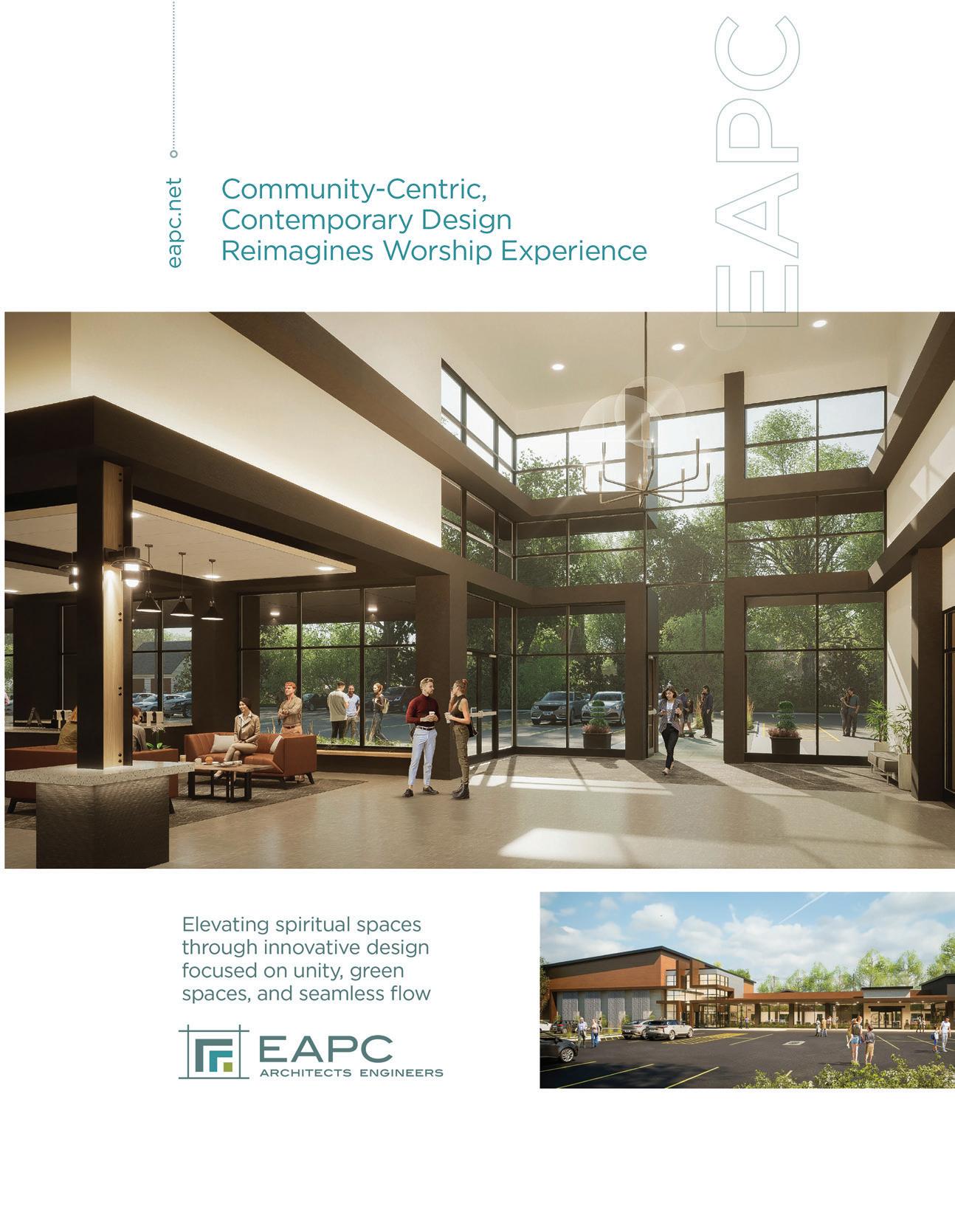





Bison Illustrated is your number one source for all of the behind-the-scenes action inside the North Dakota State University Athletic Department.
bisonillustrated.com
facebook.com/bisonillustrated
X: @bisonmag
Instagram: bisonillustrated


Home by Trendsetters Magazine is dedicated to covering all of the beautiful homes, home trends, and amazing professionals driving the industry forward.
@homebytrendsetters
/HOMEbyTrendsetters


Fargo Monthly is an award-winning publication dedicated to highlighting Fargo-Moorhead and what makes it a truly enjoyable place to live.
fargomonthly.com
facebook.com/fargomonthly
X: @fargomonthly
Instagram: fargomonthly

You may already be familiar with our Faces of Fargo-Moorhead-West Fargo publication which we publish once per year in order to highlight the faces behind all of the great businesses in the community.

Future Farmer is our farming publication which brings great tech-focused content to readers across North Dakota and Minnesota.
futurefarmermag.com
facebook.com/FutureFarmerMag

Are you in need of a new career? The Great Places to Work Fargo-MoorheadWest Fargo Annual Career Guide highlights amazing businesses in the area that provide great growth opportunities, benefits, and more!


HOW FORMER BISON FOOTBALL TEAMMATES BANDED TOGETHER TO CREATE OPTIMA



ptima, a dynamic and fullservice real estate firm, was founded by cousins Alex LaVoy and Anthony LaVoy along with Tony Paul in January 2022 with a vision to transform the landscape of property management, construction, and real estate services. Initially established as a construction and land development entity, Optima rapidly evolved to encompass a broader range of services. By April 2023, the company had expanded to include property management, and by June of the same year, it had successfully launched its Realty division. I sat down with the team to learn more about their story and take a deep dive into what Optima is all about.
CONTINUED NEXT PAGE




Northfield, MN, native Cole Jirik first came to Fargo to play football for NDSU in 2009 and ended up starring for the green and gold in a career that included three national championships. Since ending his athletic career, Cole has been heavily involved in the local real estate market and, in April of 2023, he joined the Optima team as a managing partner. Cole runs the day-to-day operations of managing properties, finances, leasing, tenant issues, maintenance, work orders, and more. Outside the office, Cole enjoys sports and repping his Vikings gear.

With an existing background in commercial real estate, Warren, MN, native Tony Paul joined forces with Anthony LaVoy in 2015, and later helped bring the dream of Optima to life. Like the other guys, Paul played football at NDSU, with the values of teamwork and dedication still at the core of Optima. Outside work, Tony is passionate about hunting and spending time with his children.

Alex LaVoy is the managing partner at Optima Development, a firm he co-founded in January 2022. The Mahnomen, MN, native also moved to Fargo to play football for the NDSU Bison from 2011 to 2013. LaVoy specializes in overseeing construction and land development, focusing on the planning and design phases, and collaborating closely with city planning departments to bring projects from concept to reality. Alongside his professional commitments, LaVoy values spending time with friends and family and enjoying outdoor activities.

Mahnomen, MN, native Anthony LaVoy moved to Fargo in 2009 to play football at NDSU, where he played alongside Cole from 2010 to 2013. Today, Anthony is both a broker and co-owner of Optima, overseeing a team of real estate agents, specializing in leasing and sales transactions in commercial and residential real estate. He supports Cole, acting as a liaison between tenants and the company for various properties, while also managing leasing terms and extensions. LaVoy is also a co-owner of Optimal Development, where he primarily focuses on securing land and preparing it for development, ensuring it meets financial feasibility criteria. Outside work, Anthony places high importance on spending time with friends and family and enjoys hunting.

CONTINUED NEXT PAGE




With Alex having a background in commercial construction and Anthony having a background in real estate, the two cousins recognized a unique opportunity to combine their expertise. Their decision to collaborate, along with the involvement of friends and fellow NDSU Bison football teammates Tony Paul and Cole Jirik, was pivotal in setting the foundation for Optima.
Despite facing market challenges such as fluctuating interest rates and construction costs, the Optima team's adaptability and resilience have proven to be building blocks for success. While the construction landscape is always changing, the Optima team's vision has remained consistent: addressing the needs of the communities they serve.
Optima functions in three main divisions: residential, commercial, and development. In the commercial division, Optima specializes in commercial properties, including offices, retail space, and warehouse space. In the residential division, Optima manages duplexes, single-family homes, and apartments, with their largest complex comprising 72 units.
In the development division, Optima functions in two ways; they either initiate projects based on perceived needs in specific areas or the Optima team works with clients who approach them with specific requests. "No project is really out of the equation," Alex said. "We don't necessarily have a specific niche; we focus on building for the need."
The major strengths that the Optima team brings to the table is their diverse expertise, versatile experience, and ability to collaborate. "We all feed off of each other's experiences to achieve a common goal and deliver the product our clients are looking for," Alex said.
Anthony believes their shared background in football is also a foundational element for their work ethic, punctuality, and commitment to clients. "We're very transparent and honest, which is key in representing our brand," Anthony said.
But it's not just about the skillsets and values football was able to offer to the Optima guys that have led them to where they are today. It's about the networks created, relationships built, and giving back to a community that supported them and their journeys. Because of this, their ultimate priority is to


Optima is licensed and insured for both commercial and residential construction in North Dakota and Minnesota.
In total, Optima Property Management supervises around 550 units, extending from Fargo, ND to Warroad, MN.
pour back into the Fargo-Moorhead community out of gratitude.
"We all came here to play football for NDSU. The community really supported us here, and we want to give back and support the community in every way possible. One of the best ways we can utilize our skills is to build affordable apartments, homes, and office or rental spaces [for the community]," Jirik said.
One of the gaps the Optima team noticed in the industry that they wanted to capitalize on were transparency and reliability. "When you call Optima, you'll have direct access to a decision maker, which is why we pride ourselves in quick responses and getting things done for our clients," Jirik said. "So that's a niche we saw that we could fill with our specialties."
Heading into 2024, the Optima team is excited to continue investing in the community through new projects and exploring new avenues of development. "Don't hesitate to give us a call and tell us what you're looking for," Alex said. "If it's any development questions... if you have land you want to sell or things you're interested in possibly purchasing, or if you need help with commercial leasing. We're an open book and we're willing to dabble into other markets and help people."



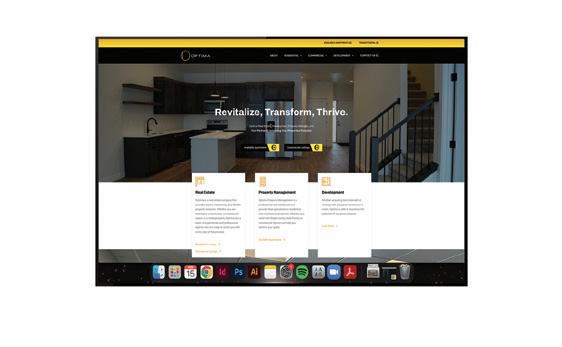

















 By Jenny Johnson, AAF-ND President
By Jenny Johnson, AAF-ND President


From NFL wide receiver to executive vice president and chief marketing officer for the Minnesota Vikings for three seasons, Martin Nance’s career journey is a unique one. We are honored to have him as our AAF-ND season finale speaker, on May 14 at Brewhalla, with our end-of-year party directly after the event. I sat down with Martin to learn more about his experience and hear a preview of what he will share with the AAF-ND crew in May!

Can you share how your experience as an NFL wide receiver influenced your approach to leadership and marketing in your current role with the Minnesota Vikings?
It has been a pleasure for me to serve in this role. This is the third season that I've been a part of the organization as chief marketing officer and my second time around with the club. I spent a couple of years here as a player many years ago. Now, it's so much fun to be a part of it and influence it from a completely different perspective, a full-circle journey for me.
Moving from a player on the field to a marketing executive is quite a shift. What inspired or motivated you to transition to the business side of the sports industry, and how did your athletic background prepare you for this shift?
I didn't grow up thinking I would play in the NFL, but I was fortunate that each step of the way kind of led to the next and I ended up playing about four years in the NFL. Through that experience,
I learned so much from so many great people, so many great coaches and teammates and support staff along the way. I also really enjoyed the interaction with the players and fans. It opened up my eyes to how a brand like the Vikings or the Steelers could impact and influence everyday people and fans, and the energy and passion that it would elicit from those people was fascinating to me as a player. That is what sparked my interest in marketing. I stepped into a marketing career and was able to lean on a lot of the skills that I had developed as a player like hard work, discipline, teamwork, problem-solving as well as resiliency, and giving maximum effort while learning how to take criticism.
How do you leverage your insights from the player's perspective to enhance the fan experience and engagement strategies for the Minnesota Vikings?
Those things all work hand in hand. The player experience feeds off the energy of the fans and the fan experience is driven by the players and how they come to life on the field. You want both of those things working in tandem and giving one another energy. As a marketer who oversees our game day experience,
the entertainment that surrounds the game day, and guest services, we know it is critical to deliver a world-class fan experience, terrific home-field advantage for our players, and an atmosphere that players are excited to play in and appreciate showing up to work and being at their very best.
The Minnesota Vikings have a strong and recognizable brand. How do you approach building and maintaining such a powerful brand in the competitive world of the NFL?
Our responsibility is to respect and appreciate the legacy we're stepping into. I mentioned I've been here for a couple of years as a player and now, as a marketer. I recognize and appreciate the people who have come before me and laid the building blocks for the work that I'm doing now. It motivates us to raise our game and make sure that we're delivering to enhance the experience in US Bank Stadium, and how we're going to surround our team on a game day.
With the NFL being a highly competitive and dynamic environment, what unique challenges and opportunities do you face in developing marketing strategies for the Minnesota Vikings?
I spent quite a few years as a marketer at PepsiCo, working primarily on the
Gatorade business, and one of the great luxuries of that brand is they formulated the strategy to be laser-focused on a singular target. When you think about the consumer, they know exactly who that person is. They know all the demographic qualities of that consumer and it's consistent year in and year out. As a sports franchise, the challenge it creates is how to communicate in all different ways and through different communication channels and leverage all different communication strategies that exist, while remaining consistent and making sure that we hold on to exactly who we are and the essence of who we are as the Minnesota Vikings.
Drawing from your experiences both on and off the field, what leadership lessons have you found to be most valuable in guiding your team and shaping the marketing direction for the Vikings?
One thing that comes to mind right off the bat is acknowledging and recognizing that your team, the people who lean on you and depend on you, as a leader, requires a lot of different styles. Each person responds to coaching and leadership differently. So, you have to be willing to morph, change, and adjust your style to meet the needs of your team. There's not a one-size-fits-all approach to leadership. I think recognizing that is very important. With that, it means you have to be willing to listen, you have
to be empathetic, and you have to be willing to put your thoughts or priorities aside and just sit with the needs or desires of the people that you've been asked to lead.
As the chief marketing officer, you likely keep an eye on emerging trends. What do you see as the future trends in sports marketing, and how are the Minnesota Vikings preparing to stay at the forefront of these developments?
Things are moving at lightning speed. The things that I read yesterday are probably different and need to be updated today. That's just the environment that we're in. With that, as you look across the sports marketing landscape, there are some fascinating trends around fan engagement. We've seen customization take off—that’s something we pay close attention to. We do some cool things with building graphics using AI tools so we can produce [those] at a much higher rate. Getting more personalized with the help of AI has been exciting. How we summarize games or produce content post-game is completely different from the past. I think you'll see more and more trends that speak to and appeal to Gen Z in a way that doesn't talk down at them or doesn't kind of placate them but embraces their preferences.
What can we expect at the event?
One of the things that we take seriously is this
idea of a fan journey and recognizing that our fans start with us at all different stages of life. Wherever they come in, we want to evolve them and help them kind of navigate through our fan journey. Taking consumers from where they are today and taking them along the journey is something that we'll get to discuss and talk a little bit more about. I mentioned guest service is a critical ingredient in our organization. When you think about a football team, you think about the stands in the stadium, you think about the players on the field, but you also need to think about things like entering the stadium and what it looks like. What are the initial impacts or experiences that you have, as you enter a stadium? We'll get to hop around and discuss that—it's going to be a lot of fun. I think we'll also leave time to interact with the audience and make sure we answer some questions, but I can't wait to get out there and dive in with some talented people that I know will be on hand.


today's business landscape, data is the very lifeline that fuels decisions, drives innovations, and shapes strategies. However, organizations often find it challenging to effectively manage the massive amounts of data they hold. That's where data management comes into play.
Data management is all about collecting, storing, and analyzing data in the most efficient way possible to help businesses make informed decisions, optimize operations, and unlock invaluable insights.
Read on as we look at the consequences of improper data management and discuss how organizations can effectively deal with these challenges.
Failure to manage data effectively can lead to the consequences listed below, including missed opportunities, inefficiencies, and even business-ending events:
Imagine navigating the roads using a faulty map. You’re bound to end up in the wrong place. Without accurate data, organizations will be charting a flawed business course toward wasted resources, missed market opportunities, and ultimately, strategic missteps that hurt the business.
If employees are working in siloed systems, drowning in a sea of duplicate data, and wasting precious manhours sorting the mess, businesses won’t have time for productive work. Ineffective management erodes productivity and keeps companies from growing.
A leaky boat is bound to sink. Poor data management can sink a business by exposing it to security risks and even data breaches that could result in noncompliance with regulations, which can lead to legal issues and fines.
Mishandling of customer data is like breaking a sacred covenant. It fractures an organization’s reputation and erodes trust, leading to client disengagement and a tarnished brand image that could be difficult to rebuild.
Think of a large, inaccessible gold mine. Now, imagine all that untapped precious metal. That’s exactly what businesses that lack data management strategies resemble. If a company fails to leverage data, it’s bound to lose ground to businesses that use analytics and AI to unlock groundbreaking insights and fuel future success.
Poor data management slowly eats away at revenue and balloons expenses. Businesses end up incurring expenses on storing duplicate or irrelevant data that do not contribute to its growth.
The good news is that organizations can partner with trusted guides who are equipped with the expertise and resources to transform hidden data liabilities into revenue-churning assets.
Here’s how an IT service provider can put your business on the road to success:
A trusted IT service provider will deploy robust backup strategies and comprehensive recovery plans that will help prevent data loss.
Your IT service provider is like a guardian, keeping you safe from cyber threats lurking in the dark. You can focus on your business knowing that your assets are being protected with advanced security measures that can repel sophisticated attacks.
Imagine having a team of IT experts working for you without breaking the bank. Data problems can bring your
business to a halt, but with the help of top IT professionals, you can easily manage or resolve any data-related issues anytime, anywhere.
Data compliance regulations related to privacy and security are always evolving. It can be tough to keep up with rules and regulations while managing the day-to-day activities of your business. However, an IT service provider can help you stay ahead of the curve and ensure you meet the stipulated regulations.
An experienced IT service provider can tailor data management strategies to meet your business goals and help you transform your data into a strategic asset.
Your data is your gold mine with precious untapped potential. However, navigating the tricky data management terrain on your own can be challenging —and that’s where IT service providers come in.






lready, people are integrating AI into their lives. People are using it to enhance and come up with recipe ideas, create memes, and, more importantly for this magazine, improve work processes.
In this issue of Fargo INC!, we learn from innovators like Paul Breuler of Maktelier, with his dedication to Pallet Shuttle Automation; Scott Meyer, who is on a mission to democratize AI with Chipp.ai while enabling personalized AI experiences for businesses and individuals; William Cromarty of Kirkwall, a company providing a holistic monitoring solution for robotic and industrial systems; and Jake Joraanstad of Bushel, a company revolutionizing the agriculture supply chain.

Bushel, based in Fargo, is an innovative software company dedicated to modernizing the agriculture sector through digital infrastructure. Since its founding in 2011 and platform launch in 2017, Bushel has rapidly grown into a leading provider of software technology solutions for the agricultural industry. Its mission is to connect the grain industry by building products that solve real problems like workforce shortages, lost paper tracking, and delayed payments, and to enhance the collaboration between grain elevators, retailers, and the farmers they work with.
Bushel's platform has significantly impacted the agriculture sector, with more than 2,600 grain and ag retail facilities across the U.S. and Canada using its services daily. The platform supports over 45% of grain origination in these countries, managing almost 10 billion bushels. Their key products include Bushel Mobile, Bushel Trade, Bushel Fulfillment, Bushel Farm, Bushel Payments, and Bushel Wallet.
Considering Bushel's role at the forefront of agricultural technology, we sought insights from Co-Founder and CEO Jake Joraanstad on the company's innovative application of AI.
A: We have unique datasets that we work with that I think, over time, are going to need to leverage AI.
We are using AI ourselves with our engineering teams and throughout the rest of the company as well.
On the business side of the company, there are quite of few of us that are using ChatGPT premium. Most of our use there is creative, writing, etc. Our marketing team is also using it to help develop go-to-market plans and to help write content—for us, doing this is a no-brainer. In this area, it helps us get the project started and cuts down on the time we are spending filling out all of the details.
On the engineering front, it's pretty important to us. We're using Copilot, which is by Microsoft. It helps engineers write better software and more efficiently. Our general thesis is that it makes an engineer 2030% more efficient. In some cases, it's as capable as an intern or a junior developer sitting alongside you.
We started using Copilot in the middle of the year last year via a test case and that went well enough that we included it in our budget this year to have that tool for most of our team. It has definitely been worth the time and money.
A: Personally, I am biased towards using these tools. Although you don't necessarily want to be putting proprietary information into ChatGPT. Companies like ourselves, which have IP and private information, need to make sure they're being smart about where they're putting their information.
 JAKE JORAANSTAD
JAKE JORAANSTAD
Co-Founder and CEO, Bushel

Bushel completed a $47 million Series C investment fund in 2021.

When we did the test case last year with Copilot, we read through and worked on what we could and couldn't use Copilot for. We worked on figuring out how they were using our information and at the end of it, we felt comfortable providing it to our team.
Q: HOW MUCH TRAINING DID YOU HAVE TO DO AROUND THAT IN MAKING SURE THAT YOUR EMPLOYEES WEREN'T PUTTING SENSITIVE INFORMATION INTO THE AI SYSTEMS?
A: We just made sure were clear about our expectations and what we were and weren't comfortable using it for. It really hasn't taken up a lot of our time.
Q: ARE THERE ANY OTHER TOOLS YOU ARE USING?
A: We're currently developing some Custom GPT models for our team and our customers using our data. The idea is to create what we're calling a Bushel Buddy Bot. We taught it how to read our documentation and how to understand any questions our own team may have with our internal documentation at Bushel.
For our customers, we're helping answer questions like if a farmer wanted to know how much corn they delivered last year versus the year before that. This would also work on the other side for retail customers that we have as well.
We're doing this using mostly Microsoft tools and partially through OpenAI's private business tools as well—we feel more comfortable doing proprietary work with this.
Q: IT SOUNDS LIKE YOU HAVEN'T DONE ANYTHING YET WITH THAT UNIQUE DATA SET THAT YOU MENTIONED EARLIER, IS THAT CORRECT?
A: We certainly haven't built our own models yet using heavy AI tools. We do think we have a pretty unique data set though. We're still trying to figure out the use cases for our customers. We have to focus on the right ways we can help the customer and we also have to focus on what is a good use of their information and what is not. There are things that are on the balance of being inappropriate or things that we can't do given our agreements. So, we have to be smart about how we think about solving any particular challenge for the customer.
A: Well, in any kind of business case where you have customer data, it's proprietary to the customer, and, generally, you'll have agreements that will dictate what you can and can't do with the information. So firstly, you need to follow those agreements really well. The second part is even if you have the right to do certain things, you have to decide if it's beneficial and who it is beneficial for. You could imagine having information and tools available to somebody who is interested in it. But agriculture is a twosided market—there's always somebody buying and always somebody selling. And if you're only providing value to one side of that equation, then you're creating a negative effect on the other side, which could be our customer. So, we have to be very smart about which capabilities we're pursuing that would actually help our customer because we have no interest in hurting our customer. So, that's a trick to balance.
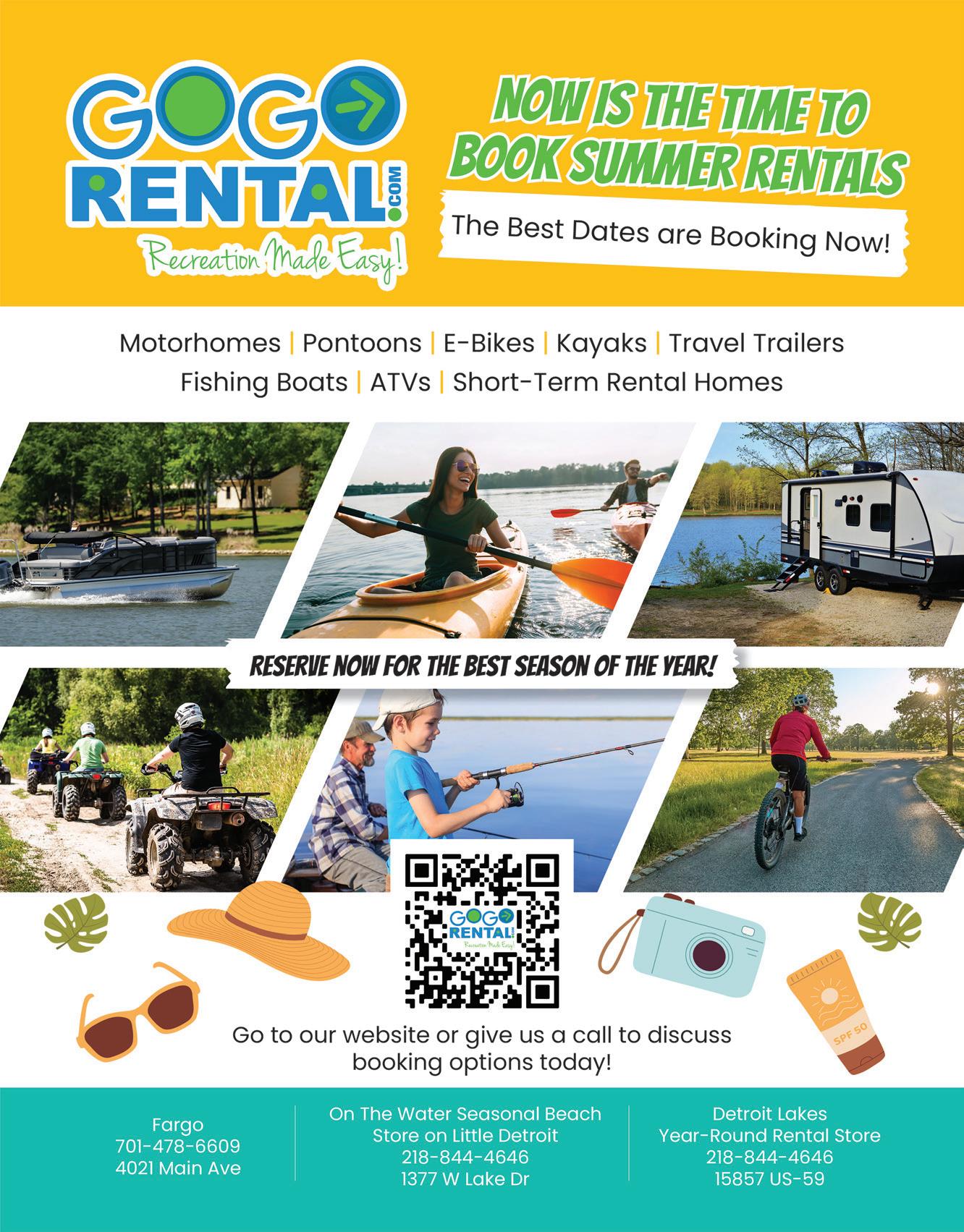

Q: WHAT ARE SOME IMPROVEMENTS YOU WOULD LIKE TO SEE WITH AI GOING FORWARD?
A: ChatGPT's models aren't necessarily good at math or understanding metrics without context. For companies like us, being able to understand numbers and do calculations with numbers is more important than the actual language itself.
I think the day when it's solving real problems is when we no longer have to build business dashboards or reports. These tools should be able to do that at some point down the line— that will be a good leap forward. I think we're pretty close.
Q: HOW DOES BUSHEL STAY UP TO DATE ON RECENT TECHNOLOGICAL ADVANCEMENTS AND KNOW WHEN TO SERIOUSLY LOOK INTO SOMETHING?
A: That's a challenge. You can't just sit back and hope it comes to you. You have to be very proactive. We have a few people who are tasked with owning this as part of their job for Bushel. They make sure we're looking at these kinds of tools and capabilities and trying to find ones that could disrupt or make our business better.
You have to be interested and willing to self-educate. We have a lot of people here at Bushel who are curious and using various tools themselves. That helps with a lot of ideas being brought to the table.
Q: IS THERE ANYTHING ELSE YOU WANT TO SAY TO OUR READERS?
A: If you remember a few years ago, blockchain was the coolest thing since sliced bread—it was going to change every single thing in our lives and solve all of the world's problems. If you look today, there hasn't been a lot of real business impact to come from blockchain. It certainly hasn't changed agriculture.
But, to think that AI is going to be the next fad would be a mistake. AI's development and advancements are more akin to what happened with the internet. It's going to fundamentally change how we do business, how we build software, and how we do our jobs. The changes over the next 5 to 10 years are going to be so incredible that we can't comprehend them right now.
LEARN MORE ABOUT BUSHEL
bushelpowered.com
/getbushel
www.kirkwall.io
/company/bushelpowered
@bushelpowered




Kirkwall, founded in 2022, is a company that has evolved from focusing narrowly on cybersecurity for drones and autonomous systems to providing a more holistic monitoring solution for robotic and industrial systems. This transition was inspired by feedback received during customer interviews conducted as part of the NSF I-Corps Program.
Kirkwall's solution acts as a "check engine light" for robotic and industrial systems, offering a broad spectrum of monitoring capabilities that include both cybersecurity and physical maintenance and their Machine Learning algorithm allows for automatic shutdown due to security or safety concerns.
Kirkwall addresses the need for comprehensive monitoring of robotic and industrial systems, beyond just cybersecurity. They recognized that companies were looking for solutions that could alert them to a variety of potential issues, including the risk of machine failure due to physical defects or maintenance needs, in addition to cybersecurity threats. This broader approach aims to ensure that systems operate smoothly and safely, minimizing downtime and protecting against both digital and physical threats.

Devii, based in Fargo, is an instant API engine and online database hosting platform. It's designed to help software engineers develop better code more efficiently by automating some of the most time-consuming tasks that backend engineers face during digital transformation projects. By automating the repetitive aspects of software development, devii enables engineers to focus on writing more meaningful code.
The company utilizes advanced technology, including machine learning and an automatic API engine powered by devii software, to efficiently pull in and analyze data from various systems. This technology enables quick integration of new data feeds and the application of machine learning for anomaly detection. By identifying what normal operation looks like for a system, Kirkwall can flag abnormal behavior.
Already up to three full-time employees, things are starting to pick up steam for Kirkwall, which acquired Heath Company in August of 2023.
"We have a lot of good stuff in the pipeline," said Co-Founder William Cromarty. "We haven't officially opened a venture capital round yet, but we're probably not too far off—and things are looking good for that. Recently, we did our software launch out in California, and that went very well. So now our software is commercially available, and we're onboarding a handful of clients. What's nice is that we have a couple of big names in there. We're doing a rollout for a Buffalo Wild Wings location, which probably sounds surprising, right? Buffalo Wild Wings is a little outside of what you normally think of for autonomous systems, but we're actually getting a lot of interest in the smart building automation sector. So, Buffalo Wild Wings is an early pilot focused on monitoring essentially everything in a building—everything from temperature sensors to electrical, all of that. Pavewise, a startup out of Bismarck, is another early client of ours. This year is going to be a big push for how many users we can onboard and how much monthly recurring revenue we can achieve. We actually might be buying an industrial space in Fargo relatively soon as well. I've also spending a lot of time in Sioux Falls lately as part of our expansion this year into Sioux Falls and Grand Forks."


William Cromarty is the CEO and founder of Kirkwall, president and CEO of Heath Company, executive director of the Museum Incubator, a Corporate Board of Advisors member for the Research Institute of Autonomous Systems, a Board of Directors member for The F5 Project, a board member for Cass County Government, and a former CIA officer, among other things.

Ujjwal Adhikari is the co-founder and CTO of Kirkwall. He is a graduate of Emerging Digital Academy and he “draws on a diverse range of full-stack coding expertise with specialization in CRM software development and application of Machine Learning to autonomous system diagnostics."
Josiah Kopp
Submitted by Kirkwall
Kirkwall is currently hiring for five paid internship roles located in North Dakota. As an added bonus, all interns will have the opportunity to use Kirkwall's skydiving stipend and will receive basic training on the company flamethrower.
"Incorporating both the flamethrower and the skydiving stipend into our company culture is Kirkwall's way of selecting people with above-average risk tolerance and drive for adrenaline," Cromarty said.
"Entrepreneurship is frequently a highadrenaline activity with lots of unknowns, so we like selecting candidates who comfortably operate in that space as a way to reinforce that the pit in your stomach is often a sign of acceleration and progress rather than something to be feared."

"I've personally found it really helpful for proposal writing and grant writing. You obviously still have to go back and fine-tune everything, but I have found it really helpful for knocking out the first 80%," Cromarty said.
"My Co-Founder Ujjwal is utilizing ChatGPT in a pretty interesting way," Cromarty said. "One of the ways I've seen him be really effective with that, from a coding perspective, is when he finds an example online of code that could be the inspiration for something that we want to do. Ujjwal has found it very helpful to just paste that code into ChatGPT and have it explain what individual lines of code do. He is using it as a really great educational tool for new capabilities."
Kirkwall

"One other use case that has been interesting for AI and machine learning is edge processing," Cromarty said. "This is one that I've used in the past. And it's one that we're exploring, basically, for any kind of aerospace system. One of the biggest challenges is always bandwidth. Traditionally, what people have done in the past is pull down all the data from a sattelite and then analyze it on the ground. One of the really interesting things that AI and machine learning are opening up is allowing the system to decide whether the data it's collecting is useful or not. What that means is that you can send down only data that you consider useful. The satellite can determine the info on its own that it thinks is going to be relevant to you, which means that you're not wasting a ton of bandwidth, just sending everything down. All of a sudden, you can focus on what's important. Everything being sent down is of high value. This still takes testing before you can trust it fully and there are times when you're going to have to pull everything down and grade it as you go and give it a score on how good of a job it did so you can keep teaching it."
"Ujjwal has actually been showing me some really interesting spin-offs of ChatGPT-4," Cromarty said. "In the most recent launch, you can make custom models based on the training data you give to it. He's found some really interesting spin-offs there that allow you to generate web pages and actual code based on what you ask it to do. He has built entirely new interfaces using this as experiments over the course of an hour. I've been pretty impressed with that, and we’re already putting that capability to good use.”

www.kirkwall.io
shop.heathkit.com/shop
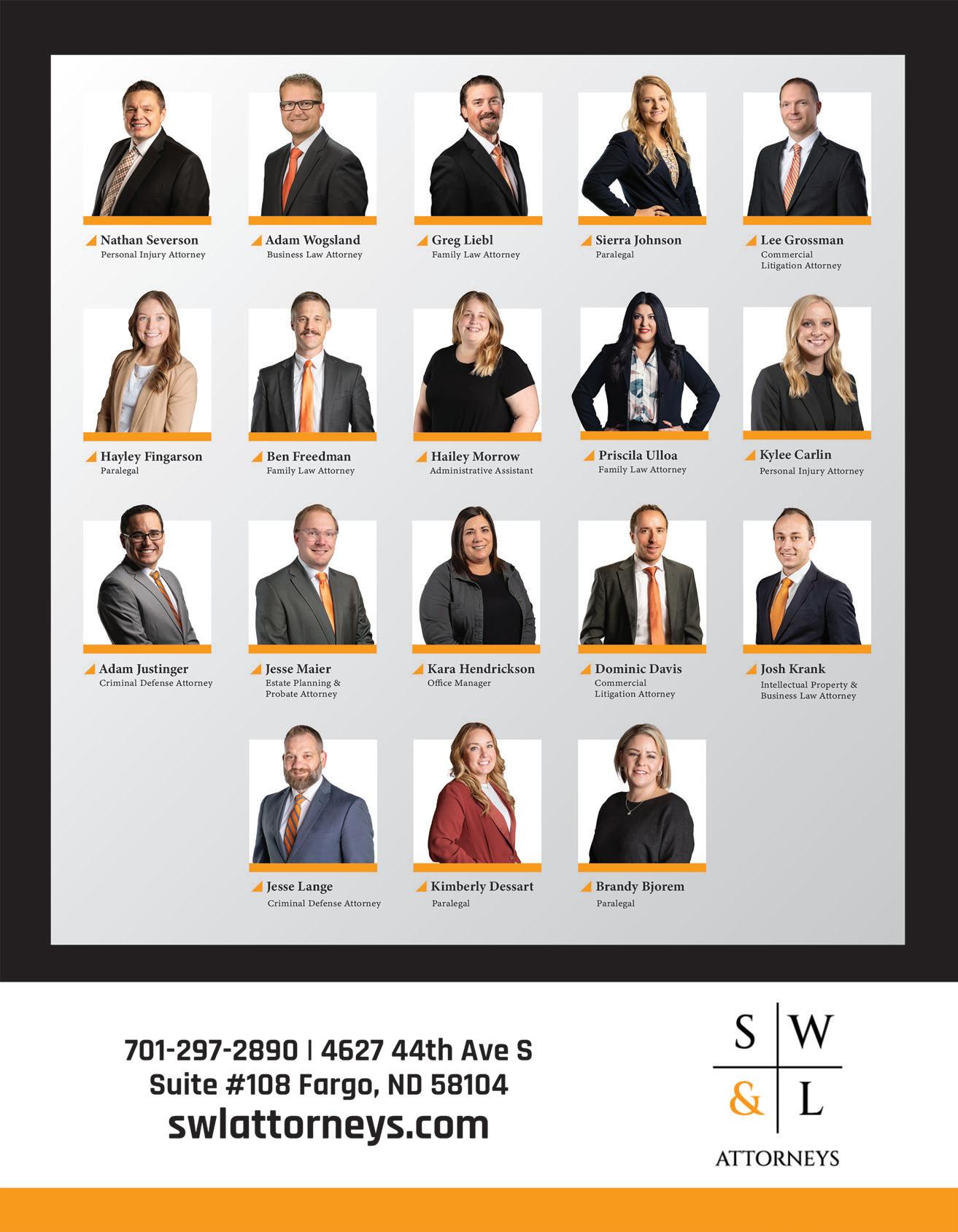
 By Brady Drake
By Brady Drake
Scott Meyer believes that AI can help you work smart and live well. That's why Chipp.ai's mission is to "provide AI for all."
Currently, that mission involves helping businesses and individuals build their own Custom GPTs that have added benefits like the ability to embed in a website, the ability to show you who is using your tool, the ability for unlimited people to use it without a paid plan, and the ability to brand the tool for your business, among other things.
And Chipp is well on its way. In the company's preseed round, they received a combined $800,000 from M25, a venture capital firm based in Chicago, IL; Cambrian, a venture capital firm based in San Fransisco, CA; and gener8tor, a venture capital firm based out of Masidson, WI, but with a location in Fargo. They also received a $400,000 LIFT loan from the state of North Dakota which comes with 0% interest for the first three years of the loan.
Currently, Chipp.ai has over 2,000 unique users, which are playing an important part in the company's continued improvement according to Meyer. "It's always a challenge in software to figure out what feedback to listen to from users and what to prioritize. However, feedback from users is the best way to figure out what we're doing and what we should be building. It kind of helps us focus our dev work."
Head to page 64 to learn how gener8tor is working to upskill state employees.
Originally, Meyer and his Co-Founder Hunter Hodnett started Chipp.ai assuming people would build custom GPTs to sell. This has happened, but not overwhelmingly. Below are the common things Meyer says he sees people using his software for.
"I think the biggest use case so far has been for lead generation. People are building previews of their services. We have an organization called Experience Institute, which does executive workshops. They have a tool that allows you to do a workshop of sorts for free while visiting their website. Throughout that experience, the tool will prompt you to contact them or to sign up. It's kind of functioning as a free preview."
"Schools are using us to develop tutoring AI tools to help students. We see ourselves as a builder. Through us you can build custom GPTs based on your own knowledge and your own company and unlike ChatGPT, anyone can use it—they don't have to have a paid plan— that's one of the most helpful things. That and the fact that you can embed the tool and brand it to match your company."

Scott Meyer has a long resume that includes roles as a Founder, CEO, VP, educator, and AI expert. Currently, with Chipp.ai, he is working to creat Custom GPTs that are easy for businesses to implement into their processes.
CONTINUED
 Geneva Nodland
Geneva Nodland

"These tools can really be used to come up with different ideas. People mainly think about them as text generators— they're really good at that too—but a lot of times we're not thinking about different perspectives, and it can help with that."
"It can also be really good at SWOT analysis or looking at data and getting insight on how to market or sell differently based on sales numbers."

"I think it could also help make it easy for teams to integrate AI. The biggest gap I've seen is people are trying AI but it's not consistently used across organizations. You might have one or two people who are really into it and they could build custom GPTs and share them with their company. Nobody else would need to know anything except how to answer questions from the GPT. This kind of gets rid of the need for someone to know how to prompt or how to create AI tools. You could just have someone on your team who's into it do that. And then everyone else can use it for the actual thing."

"Successful organizations are putting aside dedicated time to figure AI out. So some organizations will do that across the board—an example of this would be having everyone in the company on a Friday spend from 2 p.m. to 4 p.m. building a tool. That's pretty extreme for most organizations that aren't tech-focused."
"I always recommend having a place to share what you're doing with AI. Right now, I think the biggest problem is people feel like they can't use AI—that it should be hidden or whatever, but you should share. One of the simplest ways to go about this would be to have a shared Google doc where everyone can copy and paste the things they have been using AI for. Then, say, once a month, the team could meet and people could talk through the different things they did."
"If you have someone who's really into AI, you could have them be the integration person."
"You can use AI to write better thank you emails to upsell clients."
"OpenAI released Sora, their video generation tool, for testing recently. We can't use it yet and my biggest takeaway from that is we're not ready as a society. There are a lot of things that we have to get ready for. Right away, I think about where advertising goes with this. First of all, I think every advertisement will be targeted to you individually, and it might be created for you on the fly. If they figure out what you're into based on what you look at, they could do things on Instagram with prompts like, 'Make a video for someone in Fargo who likes hunting and talking about tech for these earbuds.' I don't think people are ready for that. The question is are we okay with everything not being real? But this gets us into the question of what is real because, with the videos we have currently, a video editor is doing those same things on the back end for advertisements. Obviously, the deep fakes stuff is a little scary. It's scary when no one will trust anything. On the positive side, I think it opens up video marketing, video creation, and all that stuff to anybody. My 10-year-old daughter could create amazing stuff with no knowledge of a camera."
"Everybody has the power, but the companies and people who take a little bit of time to sharpen the axe before they use it, and get it into their workflows are the ones who are saving time and doing better work."

"I still think the tooling has been built out really well, but the individual use cases haven't been. So, I expect a lot more vertical integration. An example of this would be a tool for dentists that does exactly what they need and integrates into the software that dentists use. "
"I think the really, really cool stuff is yet to come. Content marketing is great, but once you get into heavily regulated areas like medicine, space travel, and product development, it's going to be huge."

"I always tell people. It should allow you to be more human by taking away the annoying work. There's a lot of fear around jobs, but it's not going to be able to do the creative hard thinking. I think most people should think about it like a conversational partner who can help you come up with better ideas, not take your job."


CHIPP.AI
"I use Chipp to create custom GPTs."
CHATGPTI
"I use ChatGPT-4 for text and image generation."
PERPLEXITY

"I find myself using perplexity for search—I kind of think about it as a


GAMMA
"I use gamma.app to create PowerPoint-like presentations."

PDF.AI
"I liked PDF.ai for looking into PDFs and finding sources and stuff like that."
GRAIN

"I use Grain all the time. Grain creates notes every time you have a video meeting and then it creates action items and summaries. It allows you not to take notes. One of the great things about it is that it includes time stamps so you can go back and revisit something a colleague said."
LEARN MORE
CHIPP.AI
chipp.ai @chippai
/company/chippdotai
SCOTT MEYER fivemin.ai
/company/chippdotai/




Maktelier Founder Paul Breuler is an interesting man, to say the least. What he's doing in the realm of AI is even more eye-catching than his background, perspective, and approach to life— all of which have led him to dedicate 16 hours a day to his recent efforts with the fully automated warehouse solution Pallet Shuttle Automation, avoid almost all forms of television, and still find time for his passions like woodworking while raising a young family with his wife, Lindsay Breuler, who, as managing director of the gener8tor North Dakota Investment Accelerator, also lives a vigorous life.
"How do you become a Thomas Edison or a Nikola Tesla? They started young. They didn't have TV. They read a lot. They learned a lot. They got involved," Paul said. "They never stopped. They didn't vegetate in front of a television like we do today. I try to live by that. I try to be moving and be with my kids—I try to be doing things."
With that approach to life, Paul has already been able to accomplish a lot. After overcoming early struggles in life that included experiencing homelessness for a time as a teenager, Paul managed to rise through the ranks at Microsoft as a senior software engineer building the Application Lifecycle Management (ALM) for Power Platform workshop and services, a multimillion-dollar business within Microsoft.
Pallet Shuttle Automation, founded in 2008, is an advanced storage and retrieval solution designed to optimize the handling of goods within warehouses and storage facilities. It's a part of automated warehousing systems that aim to increase efficiency, reduce operational costs, and maximize storage density. Paul Breuler and his team are working to make the solution even more powerful through the deployment of AI.
Toward the end of his work with Microsoft, though he didn't know he was nearing it at the time, he was approached by a friend and began working with Pallet Shuttle Automation.
"My friend called me because the co-founder of Pallet Shuttle had passed away and they needed some help," Paul said. "They contacted me last December, and they said they needed it working in two months so I was like, 'Okay, let's do this.' I started off just moonlighting as I was working at Microsoft because I figured I'd just help them out a little bit. Originally, I told them I'd give them my afternoons and evenings. There were a lot of late nights, but the algorithms are well-documented and publicly available. So, it's not like it's anything fancy or novel in terms of getting things to move around. It's very well known. Those algorithms have been around since the 1960s."
What was one more project for a man who had been tinkering his whole life? Paul grew up pulling apart computers and putting them back together, taking apart RC cars and piecing them back together, and “doing things he shouldn’t be doing with computers at school.”
"[The school] didn’t have the security that they do today,” Paul said. “We were able to get on the terminal and spam the whole school’s computers with all kinds of random messages. It was just fun stuff but it was that hacker mentality and trying to get things to work in an automated fashion.”
There was even a time when Paul was wrongly accused by his father of sabotaging his own van so he could drive his father’s car. Because of this, his dad stood over his shoulder and made him fix everything himself. “I didn’t like getting yelled at, but I loved the work. I loved figuring something out that I’d never done before.”
Paul only moonlighted with Pallet Shuttle for about a month and a half... because he ended up in the hospital.
"My wife decided to move back to Fargo just that year prior in September and we wrapped up a five-year home renovation. She told me about 60 days before she wanted to move that we needed to be out and done. I somehow condensed two years of work into about 30 days. I worked all day, every day. At some point, I got hurt because the hours were just too long. I fell off some scaffolding, tore some ligaments, and

HOW DO YOU BECOME A THOMAS EDISON OR A NIKOLA TESLA?
THEY STARTED YOUNG. THEY DIDN'T HAVE TV. THEY READ A LOT. THEY LEARNED A LOT. THEY GOT INVOLVED," PAUL SAID.
"THEY NEVER STOPPED. THEY DIDN'T VEGETATE IN FRONT OF A TELEVISION LIKE WE DO TODAY. I TRY TO LIVE BY THAT. I TRY TO BE MOVING AND BE WITH MY KIDS—I TRY TO BE DOING THINGS."

got seriously injured. The injury, the stress, and the move to Fargo all just killed me. So, I was in and out of the hospital for two to three months. It was pretty wicked, but it gave me distance between Microsoft and Pallet Shuttle and gave me time for reflection."
That time for reflection didn't immediately facilitate a career change for Paul, who then returned to Microsoft for a while, but according to him he "just wasn't there mentally."
When you ask him about his time at Microsoft, you can tell that he has true passion for the work he did over his seven years with the tech giant and that he admired the people he worked with. During Paul's time at Microsoft, he wrote and authored materials with another software engineer named Melody Universe that helped companies and governments deploy code in a drastically shortened amount of time.
“Melody and I authored the ALM for the Power Platform workshop. We created multiple services and authored a good bit of tooling, such as libraries, templates, and the core logic for Power Apps Command Line Interface (PAC CLI) that allows you to write code for the CLI once and deploy to Azure DevOps and GitHub from the same code base,” Paul said. “We created and scaled the Workshop, services, and consulting business with over 100 accredited engineers globally to deliver, evangelize, and support customers’ ALM needs. A large group of amazing people worked to scale the ALM solution at large along with us—I want to make sure that people know this as well.”
"We spent two years with the Government of Canada and when they went to production, I took their entire tech staff
out to a cafe and bought them all coffees, lattes, and some snacks. We brought a laptop and one cell phone and we did deployment for the entire Government of Canada Economic Development Committee from a cafe in 45 minutes with a cell phone," Paul said. "The ability to unburden people is an amazing feeling."
However, upon returning to work, Paul's ALM team had been decimated by rounds of layoffs within Microsoft and he found himself disillusioned and amid a professional identity crisis of sorts. He had lost one of the things that gave him purpose. A thing he had found stability in after a lifetime, or as he says, “many lifetimes” of instability.
“It was the culmination of many small moments that brought me here because my life story is just insane. I've lived many more lifetimes than a person my age should have ever lived,” Paul said. “I worked a third shift doing baking. I've gone to school for cooking, and architecture, and eventually got into computer science. However, I started a computer science-type business doing small business networks in my teens.”
“When I met my now wife, Lindsay, I was 15 or 16 and I was homeless previous to meeting her and had just gotten back with some family who were helping me figure things out. I wasn’t doing the things I was supposed to be doing and she said to me, 'I don't date stupid people.' Prior to that I would literally show up to school, take a test, and I'd walk out the door because I was hungry and I didn't have a house. So my first goal was to eat. I would skip school and I would go to somewhere like McDonald's and eat. I wasn't applying myself because I was looking at things day to day to get
Distributed systems involve multiple software components or applications that work together on different machines or environments to achieve a common goal. This architecture can enhance the system's scalability, reliability, and fault tolerance.

through the turmoil and to get through my life. But one day, Lindsay said to me, ‘Take a step back. Where are you going to be in five years? Because you won't be with me if you keep doing this shit.’ After that, my grades went straight to A's and I skipped from algebra to geometry to calculus. I was taking anatomy and physiology honors and doing actual dissections on cadavers in high school. I went from an idiot to a very high level overnight because I had somebody who believed in me and who gave me that backing. So, if I were to say there was a pivotal moment, it was meeting my wife, hands down."
Paul says Lindsay has continued to push him to be better through the years. "I wouldn't have started the first business if it wasn't for her. I wouldn't have gotten good grades in school if it wasn't for her. I wouldn't have scored 34 on my ACT if it wasn't for her—my teachers thought I cheated. There was somebody in there who had a couple of brain cells to rub together, it just took someone to wipe off some of the grit and smack me a couple of times to get me there because living on the streets was everything you don't want your kids to have to go through. I've been stabbed through the chest. I've been shot at. I've been lit on fire, all kinds of shit.”
When you overcome those things to get to where Paul has gotten, you are never one to sit still for long. In June of 2023, he left Microsoft and founded his own company, Maktelier, which would contract for Pallet Shuttle full-time.
"With Maketelier, I started developing a new algorithm based on all of the things that I had learned in the past," Paul said. "I've figured out the guts of how to pass these systems that no other competitor (that I'm aware of) has today. I've
done hundreds of pages of marked-up research and all the competitors that do these things all have the same problem. They all hire mechanical engineers, electrical engineers, and all these noncoder types—they don't look at it as a computer science problem. Problems in warehousing logistics have been solved for 40-50 years, but the technology just hasn't been applied because, just like they do in agriculture, in manufacturing, things move slowly. "They're the staples of our society through which we are able to support ourselves, but for whatever reason, we don't invest in them. So, by taking a step back and asking how I could look at it in a more simple manner, I was able to develop this algorithm over a few months, that now forms the basis of what Pallet Shuttle is operating on."
After developing that algorithm, Paul sold it to Pallet Shuttle Automation and agreed to a Professional Service Agreement contract with Pallet Shuttle to work as its interim CTO through the end of June 2024 to help the company get to production.
"So, it took three months to build out the core of that algorithm," Paul said. "Now it's about building the rules that help support all the different use case scenarios. I want to be clear, we are not building a separate solution for each customer. That's what they were doing in the past. That's not supportable over 30 years. As a manufacturer, you're not working with one-year deals. It's 10-year, 20-year, 30-year deals. Our smallest project is 10 million pounds of steel. You're not getting rid of that in 10 years, you're not getting rid of that in 20 years, it's going to be around for 30 years, which means your software has to run for 30 years, which means your AI has to run for 30 years."
Iterative learning in AI refers to a process where the learning algorithm iteratively improves its performance by repeatedly going through the data, learning from previous mistakes, and making adjustments to its understanding or model parameters. This concept is fundamental in many machine learning and deep learning methodologies, where iterative processes are used to optimize models to perform specific tasks, such as image recognition, natural language processing, or predictive modeling.
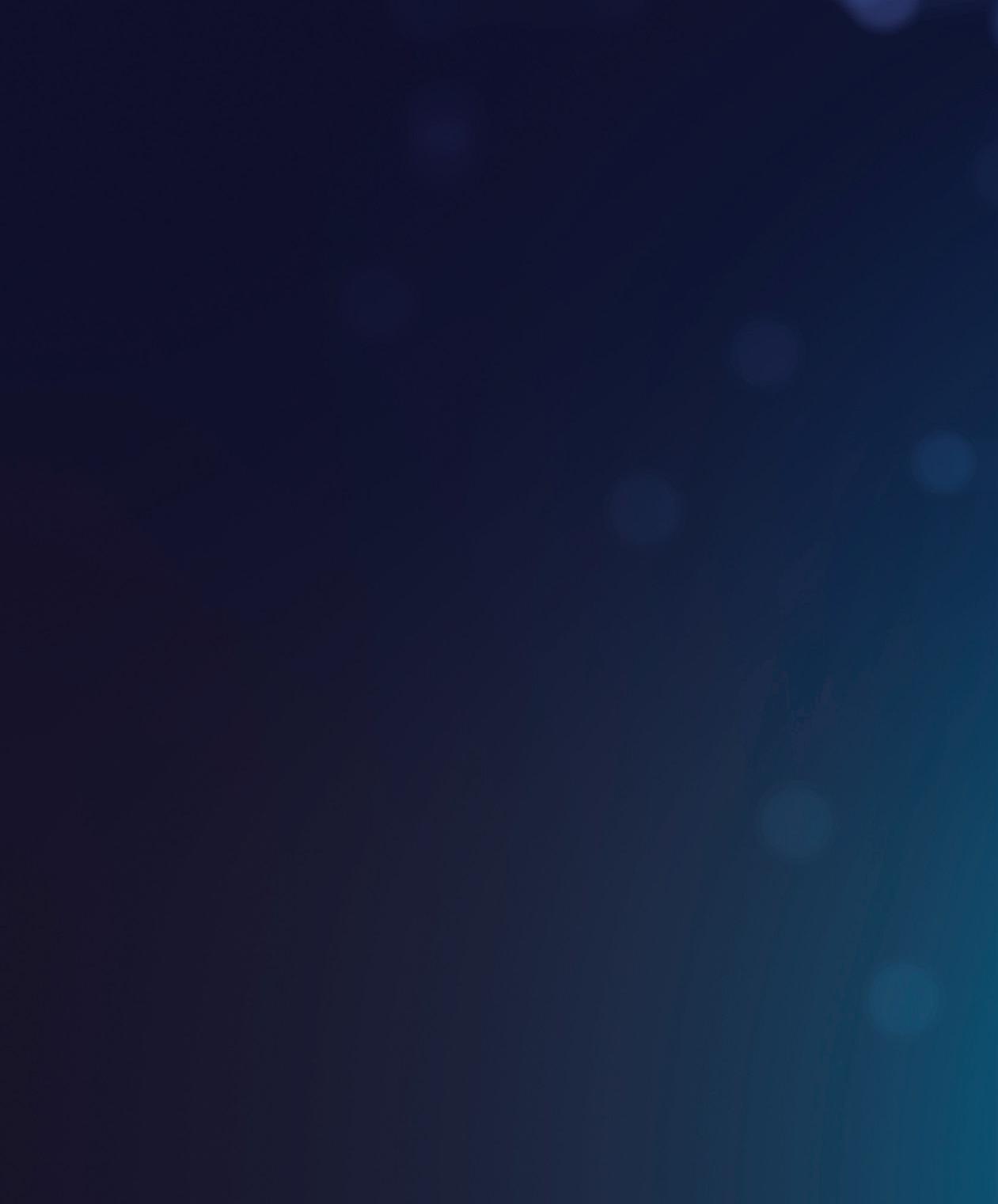
And this is where AI truly comes into play. By building the solution the way Paul is building it, Pallet Shuttle's solution will follow a core set of rules which he sets. However, on top of that, individual companies that purchase the solution are able to apply their own sets of rules and business logic (FIFO, LIFO, etc.), and the AI will use iterative learning on top of that—according to Paul, that's where the magic happens.
"Iterative learning is where the if/then decision tree comes into play, but it improves because the AI will learn over time which decisions are good and bad," Paul said. "The iterative learning algorithm has been around for a long time. If there is a problem that exists today, it probably has already been solved in computer science. It may not have been commercialized or put into a product, but I guarantee you the solution already exists. It's just a matter of how to apply that solution and how you map it onto a real-world problem."
Recently, Pallet Shuttle took the next step in development, going from its base algorithm to a distributed system, which is crucial for having a warehouse full of robots work together.
"The hardest part of everything is not getting things to move—it's getting things to move in coordination," Paul said. "Imagine you have 20,000 Teslas in New York City where everything is a one-way street and you don't have humans involved and traffic has to continuously move without anything ever stopping and you can't have any collisions— that's what we're solving.”
The Pallet Shuttle solution is essentially a series of oneway hallways, which is dramatically more complicated than solving for an open-world problem like an autonomous vehicle because they can move a little to the right or a little to the left; whereas everything in the warehouse is limited to forward, backward, left, and right. "And you have to know, ahead of time, that the decision you're making is reasonably good to keep the performance going," Paul said.
Pallet Shuttle has essentially created a working solution for this already. It's just a matter of testing and deploying. However, that does not mean that the company or Breuler are done innovating.
Paul BreulerMulti-agent AI refers to systems or models in artificial intelligence where multiple agents interact within an environment to achieve individual or collective goals. These agents can be software entities, robots, or any intelligent system capable of making decisions and taking actions based on their perceptions of the environment. The interaction among agents can be cooperative, competitive, or neutral, depending on the system's objectives and the nature of the tasks.

"This is where things get hard," Paul said. "To my knowledge, and based on Massachusetts Institute of Technology’s (MIT) latest publishing as of May of 2023, the realm of multiagent AI is largely unexplored and is kind of a horizon for the next 10 years. I'm not trying to solve all multi-agent pathing. I'm trying to solve it in one very small, very particular use case where we have one-way hallways and robots that can go front and back and left and right and that's it. And it is still tremendously complicated."
"Each robot can path on its own," Paul said. "In a scenario like this, if you imagine the number of collisions on a graph, it starts real slow but as you go up in the number of robots— to like four or five or six of them—you get to a point where no robot can ever path because every move you make puts you through the path of another robot. Solving that part is another layer—it's called hierarchical pathing. Every robot is like, 'I want to do this path, I want to do this path, I want to do this path.' And you have to figure out, based on the math, if they are all free to do what they want or if there is
contention. If there is contention, you need to figure out how to solve that.”
To do that, according to Paul, you can apply a genetics algorithm to “to spawn all these little islands” on the map and make them battle it out to figure out who has the best decision. Then, all those islands die off and based on the decisions that win, you have a new evolution of islands on the map. “It's essentially applying different weights and logics around the map [of the warehouse] to figure out if it makes these different decisions and what will result in the next best action. And that has to be done every second—it's a constant thing that's happening," Paul said.
"The nice thing about our solution is that once a robot is in motion, it performs that entire motion as one movement, because it only goes forward, back, left, and right," Paul said. "Say a robot needs to move to the left three positions, it'll take time—it takes like two to three seconds. That gives my AI two to three seconds to munch on everything else that's going on in that whole system."
FOLLOW ALONG AS PAUL AND PALLET SHUTTLE AUTOMATION WORK TO MAKE THIS HAPPEN.

According to Paul, the opportunity to play a part in exploring these new horizons is what keeps him motivated and working until 3 a.m. some days. However, much like his AI, he is taking an iterative approach with Pallet Shuttle.
"I actually figure you don't need this multi-agent pathing to get something into production," Paul said. "You don't need it because most customers have very simple requirements. You can zone things so the robots each have their own little world where they're operating and then they never collide— that works for most cases. Before we get to multi-agent AI, we can do something naive in between—we can make simple decisions based on priority. Right now, if a robot needs to go forward and other robots in the way are in a lower priority, we have them get out of the way. I call it the GTFO solution. That's literally what it is. You have to have shuttles to be able to GTFO in order to solve the rest of the problems."
"You have to take this iterative approach because of the complexity of where we are heading," Paul said. "If you can solve a business problem without going to the nth degree, do it. This isn't academia. This is solving problems for real-world business use cases. But we're going to continue to iterate."
And as he and the Pallet Shuttle team continue to creep towards that nth degree, he'll be well equipped to deploy the updates along the way.
"Melody Universe and I authored the Automated Lifecycle Management workshop and services for power platform (ALM)," Paul said. "We traveled the world teaching customers how to deploy software with the least stress possible. So who did I hire to help? The person who got nixed by Microsoft around the time that I decided to quit to be my ALM guru, if you will, Melody Universe. So Melody Universe and I have a solution she demoed to me last week, where we can deploy the entire solution from zero to 100, in less than two minutes. Melody called me up and said, 'I got this to work and text does not convey how excited I am.' She showed me the deployment and I'm like, 'That is the sexiest ALM solution I've ever seen.' This is the culmination of the seven years we spent building the ALM business I was talking about. So, not only do we have AI, but we have the ability to deploy that AI and a net new solution in minutes, and have everything running. Which also means if there's ever a disaster, we can recover in minutes."
Things are moving fast for Paul and Pallet Shuttle Automation as they continue to work on the cutting edge of robotic automation and according to Paul, he has already documented the solution. It's just a matter of testing and deploying.
"I want to be able to put the robots in a building and have a door go in and a door go out and you don't even have to know what's going on inside," Paul said. "All you have to know is that there are pallets coming out the other side."
palletshuttle.com

/company/pallet-shuttle-automation-llc/
PAUL BREULER
/in/paulbreuler
Paul Breuler
 By Brady Drake
By Brady Drake
The evolution of generative artificial intelligence (AI) in recent months has been outstanding and we are only in the technology's infancy. However, individuals, companies, and governments need to act fast to educate themselves if they want to be prepared for the shift that is about to happen and to be able to utilize the full potential of the technology.
Thankfully, the State of North Dakota began recently taking those proactive measures through collaboration with gener8tor and Microsoft.
The partnership started with a call from Governor Doug Burgum, who has a notable background in the tech industry as the former president of Great Plains Software, to Microsoft with a request to bring out a subject matter expert to educate cabinet members on artificial intelligence in June 2023. The meeting with the cabinet lasted 90 minutes and the cabinet broke out into groups for an ideation session where they asked 4 questions:
» How do you see the state using AI?
» What are some barriers?
» How are we breaking down silos within different agencies around North Dakota?
» How could we make our systems better using AI?
After the meeting with the cabinet members, Chief People Officer for the State of North Dakota, Molly Herrington reached out to Taya Spelhaug, Microsoft TechSparkNorth Dakota Lead, and told her that they wanted to do a similar session with the state's extended leadership team.
So, Senior Director of State Government Affairs Michael Mattmiller flew out and gave a 90-minute presentation to that very group.


"We talked about the evolution of AI, the trends that they are seeing or anticipating in government, and responsible use of AI," Herrington said. "Then, we talked about some of the basic resources that are available. We talked about Copilot and some of the resources that aren't quite available to us yet in government because of the different security checkpoints we have to go through. We talked about what is coming—the resources that will be available."
The state enjoyed the programming so much that they wanted to move forward. That’s where gener8tor, one of the nation’s premier startup accelerators, which has a location in Fargo, came into play.
"The state of North Dakota really wanted to lean into generative AI," Spelhaug said. "While some states are pulling away from it, we see the opportunity to make our state better using this technology. We got a ton of good feedback from people at each session."
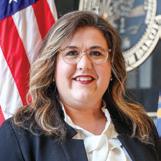






JOE KIRGUES
Co-Founder, gener8tor
provided by gener8tor
BEN STANLEY Principal, gener8tor provided by gener8tor
DANIE REMMICK
Strategic Account Manager, gener8tor
Career Essentials in Generative AI by Microsoft and LinkedIn is a six-module course with an estimated completion time of 4 hours and 30 minutes. In the course, you will learn about the history of AI, receive demos on Microsoft Copilot, and learn about different ethical considerations in the realm of generative AI.
"This tool is accessible, free, and doable," Spelhaug said. "This isn't something that takes 20 hours worth of studying. We've had over 2 million people take the course since it launched."
Learn more by scanning the QR code.
provided by gener8tor
Though the cohort was just recently completed by state employees, the seeds for the program were planted during the 2020 COVID-19 pandemic.
During that time, Microsoft launched opportunity. linkedin.com, a set of 10 free learning opportunities to help people upskill and make job changes while they had extra time during quarantine. Though this was the original purpose of the opportunity.linkedin.com, Microsoft has continued to provide online users access to free upskilling information through this domain long after the height of the pandemic. Along the way, they have continued to update their curriculums and offerings and most recently launched their generative AI skilling known as "Career Essentials in Generative AI by Microsoft and LinkedIn."
In an additional effort to help people make the most of a difficult situation in 2020, Microsoft Philanthropies via the TechSpark program teamed up with gener8tor to
Microsoft launched opportunity.linkedin.com in 2020 and opened 10 job paths during the pandemic to help people upskill. However, the program has continued to develop over time and the generative AI course is now part of it.

gener8tor is a national startup accelerator that offers critical resources like funding, mentorship, and networking opportunities.
help people go from unemployed to employed in the top 10 most in-demand jobs in the country.
“We’ve had a long-standing relationship with TechSpark where we worked with them to pilot this program,” said gener8tor Co-Founder Joe Kirgues. “We started in northeast Wisconsin and we have been expanding it across the country and have been focused on helping people who are predominantly underemployed gain new skills through these programs. Throughout this process, we've worked with these people much like we work with a startup. But, instead of working with them on things like a business plan, or a pitch deck, or an executive summary, we would do mock interviews and resume prep on top of the hard skills.”
That partnership developed further when Spelhaug approached Kirgues at gener8tor’s conference around innovation in education and workforce and said she had been working with the Governor’s and Lieutenant Governor’s office on how to skill on generative AI and
that she wanted to know if gener8tor would be open to a partnership where they would adapt their upskilling program to serve state employees with generative AI.
The gener8tor team accepted the challenge and came up with a curriculum, the first of its kind for a state government, in just 6-8 weeks using “Career Essentials in Generative AI by Microsoft and LinkedIn" as the cohort’s textbook, if you will. However, there was plenty more to the cohort than just the LinkedIn Learning modules, which can be found for free online.
"At gener8tor, In the work that we do with startups, we often help the leaders of these companies come up with creative ways to solve problems using new technologies," said Ben Stanley, Principal, gener8tor 1889. "We thought it was a very fascinating and fun challenge to take that same approach toward helping leaders in state government find ways to solve problems using artificial intelligence."

A cohort meeting.

In the program, which originally was supposed to have 40 or so participants from agencies around the state but instead had 67 because of significant interest, participants met weekly with program directors like Danie Remmick, an educator at heart, to discuss the previous week's content, ask questions, and prepare for the content in the week ahead. They also had the opportunity to take in weekly Lunch and Learns from subject matter experts. And, perhaps most importantly, each person, towards the beginning of the cohort, had to bring and pitch an idea on how the state could improve its workflows to get more done or on how the state could leverage AI to provide better experiences for citizens of the state.
“Participants were not merely voluntold; they willingly engaged," Remmick said. "The decision to increase the number of available spots aimed to accommodate diverse interests across various state agencies. Each organization sent a representative, fostering collaboration among individuals who typically operate independently. This crossagency interaction revealed insights into departmental workflows, intersections, and potential synergies. Beyond learning about generative AI, the program sparked discussions on operational collaboration and practical implementation to benefit other agencies. Truly, a beautiful outcome emerged from this cohort.”


“We want to protect our citizens’ data. We've got a huge commitment to do that. It's a moral obligation that we have to do that. And thanks to the adoption of AI that we're doing through our NDIT team, we've dramatically increased our Cybersecurity Operations Center. It's one of the most sophisticated in the country. They're responding, this last year in 2023, to 4 billion attacks… automatically. We can't take care of all of those [automatically]—50,000 of those had to be handled with some element of manual interaction. But AI helps us speed through all of those, again, to be great stewards of the citizens’ data, and to make sure that our team members and everybody we're working with, that we can make sure that we secure the privacy and the security and integrity of that data.”
-North Dakota Governor Doug Burgum
» 67 cohort participants
» 938 hours invested in learning
» 335 LinkedIn Learning courses completed through the cohort
After the original ideas were pitched, poked, and prodded by the rest of the cohort’s participants, 12 different teams were formed to work together and explore ideas for potential use cases further. Towards the end of the cohort, their capstone was to present their finalized ideas, and “10 to 11” unique ideas came forward.
"Honestly, a lot of the ideas that were coming forward were related to simplifying the user experience," Herrington said. "Believe it or not, if you want to come to the State of North Dakota and get a service, you're going to have to go to the website of that unique agency and create an account there and then you would have to go to the next agency that you need to service from and create an account there. We're currently working on how we can create one portal for that... All the ideas brought forward are now sitting with Kuldip Mohanty, the State of North Dakota's Chief Information Officer, and Kim Weis, the State of North Dakota's Chief Data Officer. They are trying to figure out what we can act on now. They're also looking at what the bigger items are that need to be flushed out and carried forward on their own as different initiatives."

"When ChatGPT really came into public awareness, one of the first things that was recognized was a need for some policy around that and some guardrails so that our team members knew how to appropriately, responsibly, and ethically use some of this. They needed to know what they could use and where there were security risks posed. So, we worked with a cross-functional group to develop AI policy and supporting guidelines for it—specifically for the executive branch agencies."
-Kim Weis, State of North
Dakota's Chief Data OfficerYou can learn more about the state's guidelines by scanning the QR code.

One of the powerful aspects of the generative AI cohort for the state of North Dakota was the opportunity to learn from subject matter experts working in the field.
» Tuesday, October 17 - Generative AI Ethics and Government Use - Mark Muro, Senior Fellow at Brookings Metro and Jason Haislmaier, Partner at Bryan Cave Leighton Paisner Law Firm
» Tuesday, October 24 - Generative AI and North Dakota Startups/Research - Jimmy Slagle, CEO and Founder, GenerAI; Jon Cabak, CEO, Detect Auto; Karthik Balaji, CEO, Aethero; and Scott Meyer, CEO, Chipp.AI
» Tuesday, October 31 - Demonstrating ND Leadership in AI - Michael Mattmiller, Senior Director of Government Affairs, Microsoft

Chief Information Officer for the State of North Dakota
provided by the State of North Dakota

KIM WEIS
Chief Data Officer for the State of North Dakota
provided by the State of North Dakota
"There were four or five shuttle-ready use cases which are very appealing to the entire review committee," Mohanty said. "The one that we're very keenly focused on exploring is making it possible to go to the state of North Dakota website and have an interface that allows you to comb through the treasure trove of information across the state's multiple websites through a simple request or prompt. Our goal is to create a frictionless experience for our citizens to interact with the government."
An example of this would be going to the Governor's Office website and asking the large language model, "How do I start a business?" Currently, you might have to go through five or six clicks until you get to the right information. Or, there are instances when trying to comply with a tax requirement that you could find yourself going through 50 clicks to get the information that you want.
"We are exploring how to do that at the moment and Kim and her team are leading that effort," Mohanty said. "At the moment, we're doing it at a very small scale and limiting it to a certain cross-section of agency users that can exhibit the behavioral pattern. Then, the next step is to understand the cost basis that is needed because everything with chatbots is all based on token pricing. Currently, we don't have a pool of money sitting around for this. So, we have to get that appropriation so we can start to build on that."

"Another one of the use cases that came out of the cohort centered around searching our statutes," Weis said. "Our citizens, at times, have struggles looking up laws and finding answers for where they can find certain statutes. This solution is very similar to the first in that it's essentially a beefed-up search engine where people can use natural language to query the large language model and find the statue—they can ask questions that will point them to where they want to go."
"The third use case that is shuttle-ready revolves around the legislative session and the plethora of information that comes out of the legislative session and how challenging it is to stay informed on all of it because there's so much data that comes out," Weis said. "So, whether it's bills that are written, whether it's testimony and videos, or agendas, it's about figuring out how state employees as well as citizens can search for those things during a legislative session. It's really challenging to do that. This third potential use case is a larger project because it also includes the component of the transcription of the videos from testimony, committee meetings, and floor hearings."

A longtime champion of technology, Governor Doug Burgum recently moderated a discussion with Marc Andreessen, inventor of the first widely used internet browser known as Netscape, at the 2024 National Governors Association meeting.
The State of North Dakota is leading the way as one of the first states to embrace artificial intelligence and is the first to complete the gener8tor cohort—because it was designed for them. What the future holds, remains to be seen.
In the meantime, gener8tor would love for more states to adopt the forward-thinking approach championed by Gov. Burgum & Lt. Gov Miller.
"One of our guest speakers during the program, Mark Muro of the Brookings Institute, studies the interplay between technology and people in different regions," Kirgues said. "He spoke about how in past technological revolutions, heartland communities in the United States have historically been left behind. With the emergence of AI, that could change. Communities in the heartland have an opportunity to be early adopters and embrace this powerful new tool to solve local and regional problems. We hope more states in the middle of the country begin adopting the same mindset as North Dakota."


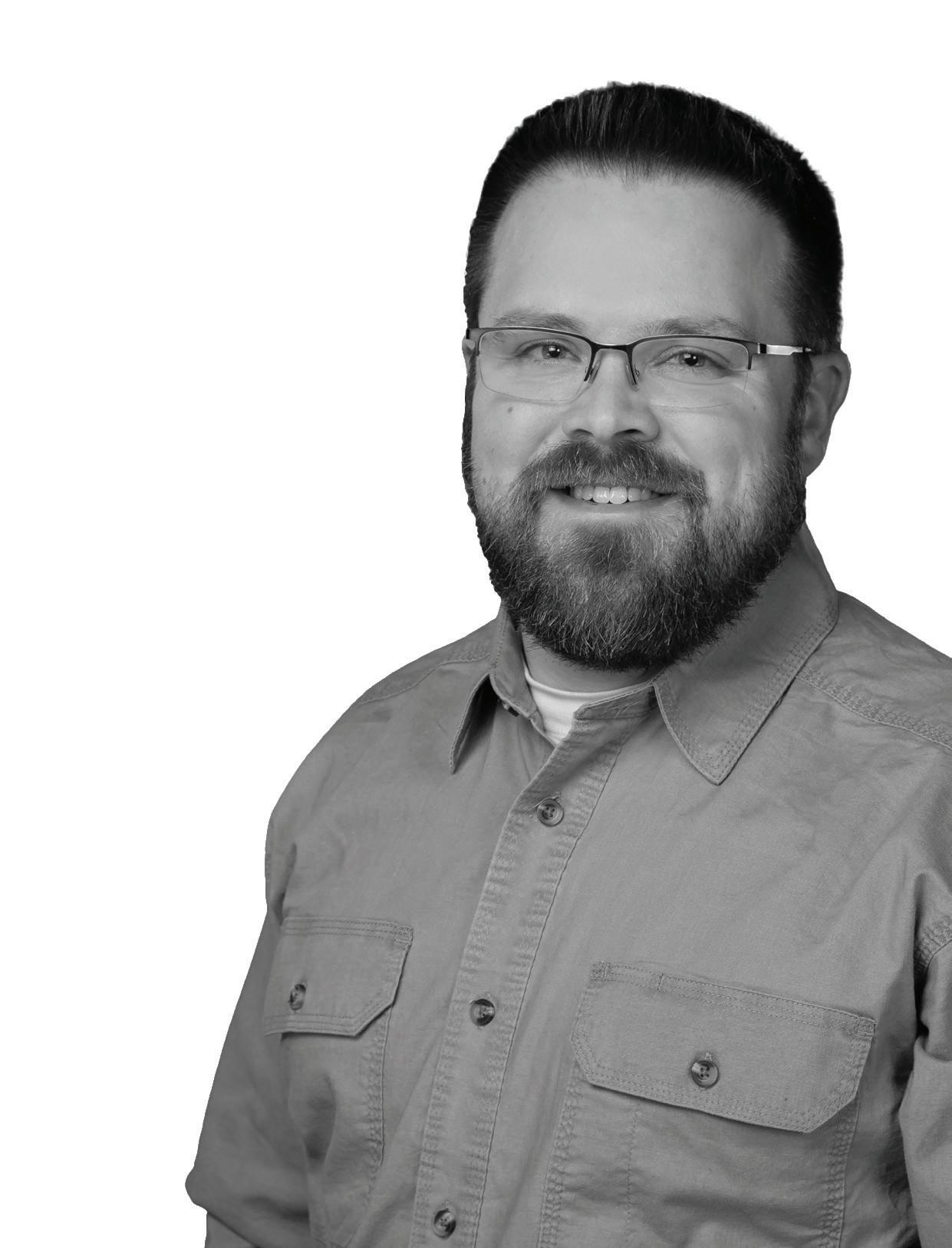
 By Brady Drake | provided by Chris Sherman
By Brady Drake | provided by Chris Sherman
one are the days of simple farm life, at least to some degree. While the wide open spaces and the 'know your neighbor' community feel still permeate through rural America, the technology involved in today's agriculture operations is far too advanced for the status quo to go on as it previously existed—especially in regards to cybersecurity.
Chris Sherman, principal owner at Tech Support.Farm, is very aware of this problem. That's why he has made it his and his company's mission to bring farmers up to speed on cybersecurity—something that, unfortunately, is one of the last things on the minds of producers.
In April of 2022, the FBI came out and listed ag as one of the top 10 industries in the United States being targeted by cybercrime, this is alarming to Sherman and many others because agriculture is a key component of our national security.
While Sherman’s professional background is in business, he has immersed himself in the field of cybersecurity out of his commitment to agriculture. This is a cause that is near and dear to his heart. It's about raising awareness to the risks posed by technological advancements in agriculture. Every new solution or advancement comes with its own cyber risk.
FOR MORE GREAT AG CONTENT, CHECK OUT OUR SISTER PUBLICATION
FUTURE FARMER!
FUTERFARMERMAG.COM

curve. But, being a child of the '80s, he was very technically savvy and ready to handle the challenge. "I remember buying my first computer when I was a teenager, promptly broke it, and had to figure out how to fix it," Sherman said.
Cybersecurity has evolved in recent years. The days of just using antivirus software like McAfee or Norton are long gone. The National Institute of Standards recently came out and released its framework, a five-piece guide that covers the different requirements for a complete cybersecurity stack.
You can find this complete guide at nist.gov/cyberframework/ framework

One can imagine cybersecurity like the strategy we use when protecting our homes. Yes, locks on the doors are important, but so are smoke alarms, carbon dioxide monitors, cameras, motion detectors, sump pump alarms, or even your dog. All of these features contribute to our overall safety and security. Cybersecurity strategies are becoming very similar.
"Agriculture needs to start taking technology and cybersecurity seriously," Sherman said. "Every day I see producers running multi-million dollar operations using residential grade hardware and a basic antivirus. We are low-hanging fruit for cyberattacks."
Cyberattacks in ag involve a lot of phishing scams, and email spoof campaigns. These attacks are becoming incredibly sophisticated. They may try spoofing your ag lender and sending you Docusign attachments. Unfortunately, people fall for this and return the documents complete with signatures, routing numbers, and bank account information.
Industrial Control System (ICS) attacks are the other less discussed form of cybercrime. ICS attacks are defined as cyberattacks on equipment that is remotely operated, managed, or monitored. This type of
attack is used for two primary purposes; holding an operation for ransom, or destruction of property. Ransom attacks are not new, but cybercriminals are becoming creative on how and when they target facilities. Crystal Valley Cooperative in Mankato, MN was attacked in September 2021, halting the company’s operations during peak harvest operations.
Industrial control system attacks can come in many forms, but they are all focused on disrupting business. Whether it is destroying hard drives that store operating software for dryers, robotics, irrigators, or other automated systems, or ransoming servers used to run critical farm operations, an ICS attack can have devastating consequences to any farmer.
According to Accenture, a leading global IT firm, in the United States, 60% of small businesses that fell victim to cyber criminals were closed within six months. Cyberattacks inside agriculture are still relatively new, we have a chance to lock our farms down before it is too late.
On April 20, 2022, the FBI released a private industry notice detailing the potential increase in ransomware attacks against agricultural cooperatives during critical seasons. Here are the recommendations the bureau made during that notification.
Regularly back up data, air gap, and password protect backup copies offline. Ensure copies of critical data are not accessible for modification or deletion from the system where the data resides.
Implement a recovery plan that includes maintaining and retaining multiple copies of sensitive or proprietary data and servers in a physically separate, segmented, secure location (i.e., hard drive, storage device, the cloud).
Identify critical functions and develop an operations plan in the event that systems go offline. Think about ways to operate manually if it becomes necessary.
Implement network segmentation.
Install updates/patches operating systems, software, and firmware as soon as they are released.
Use multi-factor authentication where possible.
Use strong passwords and regularly change passwords to network systems and accounts, implementing the shortest acceptable timeframe for password changes. Avoid reusing passwords for multiple accounts and use strong passphrases where possible.
Disable unused remote access/RDP ports and monitor remote access/RDP logs.
Require administrator credentials to install software.
Audit user accounts with administrative or elevated privileges, and configure access controls with least privilege in mind.
Install and regularly update anti-virus and anti-malware software on all hosts. Only use secure networks and avoid using public Wi-Fi networks. Consider installing and using a virtual private network (VPN).
Consider adding an email banner to messages coming from outside your organizations.
Disable hyperlinks in received emails.

CONTINUED
Focus on cybersecurity awareness and training. Regularly provide users with training on information security principles and techniques as well as overall emerging cybersecurity risks and vulnerabilities (i.e. ransomware and phishing scams).
Their services fall under three categories:
Tech Support.Farm focuses on the maintenance and optimization of the technological infrastructure crucial to modern agricultural operations. They offer 24/7 cybersecurity services to protect your entire agricultural business, coupled with robust disaster recovery solutions to ensure business resilience. Their services are tailored to meet the unique needs of the agriculture sector, with an emphasis on enhancing productivity, securing assets, and guaranteeing seamless operations in contemporary farming environments.
"As a managed security service provider (MSSP), our mission is two-fold. We work meticulously to prevent cyberattacks, and we are ready to respond when they happen. Tech Support.Farm lives by the saying 'It’s not if, it’s when.' To ensure our success we have forged deep relationships with both our security and cyber insurance partners."
Unlike other MSSPs, Tech Support.Farm sources its security solutions from one company, Kaseya. The industry norm is to have anywhere from 10-15 different security software vendors.
“We utilize Kaseya for all of our security solutions. This type of dedication has strengthened our working relationship and ensures the best service for our customers. Kaseya answers our phone calls within rings not days. We have 24/7 access to security engineers and product specialists. Kaseya has taken a special interest in Tech Support.Farm and our mission. Every six months I meet in person with Kaseya’s leadership team, and we actively work to improve the security offerings and delivery methods. We strongly value this industry partnership.”
"In the event of a cyber breach, we rely on a company called Cysurance. The security solutions we use have been 3rd party tested and are warranted by Cysurance up to $500,000 per incident. Additionally, all clients of Tech Support.Farm are automatically entitled to a $1 million flat rate cyber insurance policy through them. The actions we
Network preventative maintenance, updates, security patches, backups, and hardware monitoring by IT professionals.
Protection against cyber threats, continuous monitoring, vulnerability assessments, and around-theclock incident response.
Data backup, full system recovery, emergency planning, and rapid response to ensure business continuity after technology disruptions.



take 'right of boom' or the moments immediately following a cyber breach will determine the level of success we have in recovering financial losses or how quickly we can get a farm back online. We work diligently with the Cysurance team to improve our incident response policies and best risk mitigation practices. Through tabletop exercises and routine security briefings we actively stay prepared for these inevitable events."
"Tech Support.Farm is focused solely on agriculture. We do not serve clients from any other sector. Farms are not 8-5 operations and neither are we. During peak times, harvest, planting, etc., we are on call around the clock. It is our goal to provide the best onsite and remote service to our farmers. Our account reps are also your technicians, and they have backgrounds in ag. Clients will only deal with one person from our company. We are not in the business of churning through employees. These are long-term relationships built on trust.

Tech Support.Farm offers the best security solutions the industry has to offer, our people deliver the best service."

Some believe every drop counts—that's why international organization, charity:water works to provide those life-changing drops by committing every penny to bringing clean water to the globe. In 2007, Scott Harrison founded the organization with a crystal clear mission— to end the global water crisis with transparency, innovation, and community participation.


nd now, Sonder Bakehouse Owner and Founder Kayla Houchin invites the local community to be part of the change. Inspired by charity:water's mission, Kayla turned her inspiration into action by organizing a gala. The fundraiser showcases the power of community and the impact of collective efforts toward a world where clean water is accessible to all.
Scott Harrison launches charity:water, aiming to quench the world's thirst for clean water. With 100% transparency, every drop counts in his mission to hydrate the planet.
Kayla stumbles upon "Start Something That Matters" by TOMS® shoe founder, Blake Mycoskie, and finds a mention of charity:water. Curiosity is piqued, but the adventure doesn’t start... yet.
charity: water's impact to date
138,003 water projects funded
29 countries
17,490,802 people will be served

Scott visits Fargo, and Kayla's in the crowd. Frustrated yet motivated, she decides it's time to take action.
Kayla's efforts ripple out, turning $1,794 into clean water for 58 grateful individuals.






The single most important lesson I have ever learned in my life would be this—if there is something you firmly believe in, never be afraid to step up and expand effort for the benefit of others. Step up, stand out, and give."
- Kayla Houchin

Fall 2018
Kayla is intent on making waves with charity:water. She set herself on a mission: to make a significant impact on the global water crisis, culminating in the idea of hosting a gala event.
January 2019
Kayla reaches out to Scott. A simple ask to bring him back to Fargo to be a part of something big here.
November 2019
Kayla and Scott finally meet at the charity:water ball in San Francisco, raising $7.3 million.
March 2020
The Fargo gala, planned for May of this year, is paused, not puddled, by the pandemic.
Kayla's passion pours in, raising $29,682 and quenching the thirst of 887 people.
May 2023
Kayla has a monumental start with the first-ever charity:water gala, raising $51,121 and providing clean water to 1,278 lives.
May 2024
Second annual charity:water gala—be a part of the change!
Building on last year's success, the upcoming event promises another evening of inspiration and impact, including a silent auction, a keynote speaker, and more!
Kayla is seeking table sponsors and auction items at this time!
This year, the gala will bring charity:water's Creative Director Tyler Riewer to speak on the charity's mission. Tyler brings with him over a decade of experience and passion for charity:water's work.
The second annual Fargo gala for charity:water, happening on May 7 at Pines Black, offers a variety of participation options to support clean water. Ticket options include Individual Tickets and Bronze, Silver, Gold, Platinum, and Diamond table sponsorships. Join in on an evening of socializing, inspirational messages from both Kayla and Tyler, and a silent auction to support charity:water's mission. For tickets or more information, visit Sonder Bakehouse's charity:water page! Together, we can turn ripples of hope into waves of change!


he Red River Market is one of our community’s most vibrant gatherings. Since the market’s inception, we’ve been lucky to have many amazing vendors participate, but three vendors in particular stand out, not only for their delicious offerings, but also for the journey they've undertaken from market booths to brick-and-mortar locations.
Renae Cartier of Juice Box Fargo, Pasteur Mudende of Chai Moto, and Michele La HaiseBates of Michele’s Table have made themselves a permanent home in Fargo's culinary landscape, thanks in part to the nurturing environment of the Red River Market.

East African-inspired tea blends and coffee
Pasteur Mudende started Chai Moto in 2018 because he saw a gap in the market for authentic, handcrafted tea blends that represent the rich tapestry of East African history and flavors. He launched at the Red River Market and found success through engaging directly with the community, which helped to enhance brand recognition and foster valuable business partnerships. Being at the Red River Market taught him the importance of swift service and product presentation. With this success, he established a dedicated storefront to create a cozy space for tea lovers. Now, he hopes to expand the menu to include more soothing caffeine-free beverages and light bites.
“The Red River Market has a really diverse customer base which provides a broader audience compared to alternative channels,” Mudende said.
3955 56th St S, Ste P, Fargo chaimoto.com
/chaimotofargo
@chaimototea

French bistro with baked goods, pastries, and lunch items
Michele La Haise-Bates started Michele’s Table because she always loved baking and cooking, was influenced by her family, and saw an opportunity to fill a gap in the Fargo food scene with her unique take on classic treats. Though she never expected to do this for more than one summer, she launched at the Red River Market and found success through her consistent presence and the market’s ability to effectively market her products. Being at the Red River Market taught her the value of customer feedback and the importance of building a strong brand and customer base through regular engagement. With this success, she launched her own storefront, allowing her to grow her business further. Now, she hopes to continue expanding Michele’s Table by hosting big parties and catering, introducing the French apéritif concept, and focusing on food three nights a week.
“There is no way I would have a storefront without the customer base I was able to grow at the market,” La Haise-Bates said.

Locally sourced and organic cold-pressed juice, wellness shots, and cleanse packages
Renae Cartier started Juice Box Fargo in 2019 because she experienced the transformative power of raw fruits and vegetables on her health and wanted to share this with others. She launched at the Red River Market and found success through the vibrant community support and the market's platform, which allowed her to connect with like-minded individuals passionate about health. Being at the Red River Market taught her the value of community feedback and support, enabling her to refine her offerings and build a strong brand identity. With this success, she launched her own storefront in 2021, aiming to expand Juice Box Fargo's reach and continue offering healthy, gluten/dairy-free, and vegan options to the community.
“This summer will mark our five year anniversary of launching at the market and what a journey it has been,” said Cartier.
1414 12th Ave N, Ste J, Fargo michelestable.com
/FoodInspiredLife @micheles.table
3993 4th St E, West Fargo juiceboxfargo.com
/JuiceBoxFargo
@juiceboxfargo

Provide plenty of clear, high-resolution images showcasing your products from different angles. This helps the selection committee get a good sense of your craft and the quality of your offerings.
Be descriptive about what you offer. Include information about ingredients, materials used, sizes, and any special features. The more detailed you are, the better understanding the committee will have of your products.
Explain what sets your products apart from those of other vendors already participating in the Red River Market. Highlight your unique selling points and how they will attract customers. Whether it's a special technique, an unusual flavor, or a distinctive design, emphasize what makes your offerings stand out.
Share the story behind your business. Let the committee know what inspired you to start your venture, your journey so far, and what makes you passionate about your craft. Adding a personal touch helps convey your commitment and enthusiasm, which can resonate with the community.
Demonstrate your commitment to the local community. Discuss how your business contributes to or aligns with the values and interests of Fargo. Whether it's sourcing ingredients locally, supporting local artisans, or participating in community events, show how you are actively involved in the community.
If available, include any positive feedback or testimonials from satisfied customers. This adds credibility to your application and reassures the committee of the quality and appeal of your products.
Ensure your contact details are easily accessible. Include your email address, phone number, and any relevant social media handles or website links. This makes it convenient for the committee to reach out to you for further information or clarification.
Present your application in a professional manner. Use clear, concise language, proofread for any errors, and organize your materials in a visually appealing format. A well-presented application reflects positively on your professionalism and attention to detail.

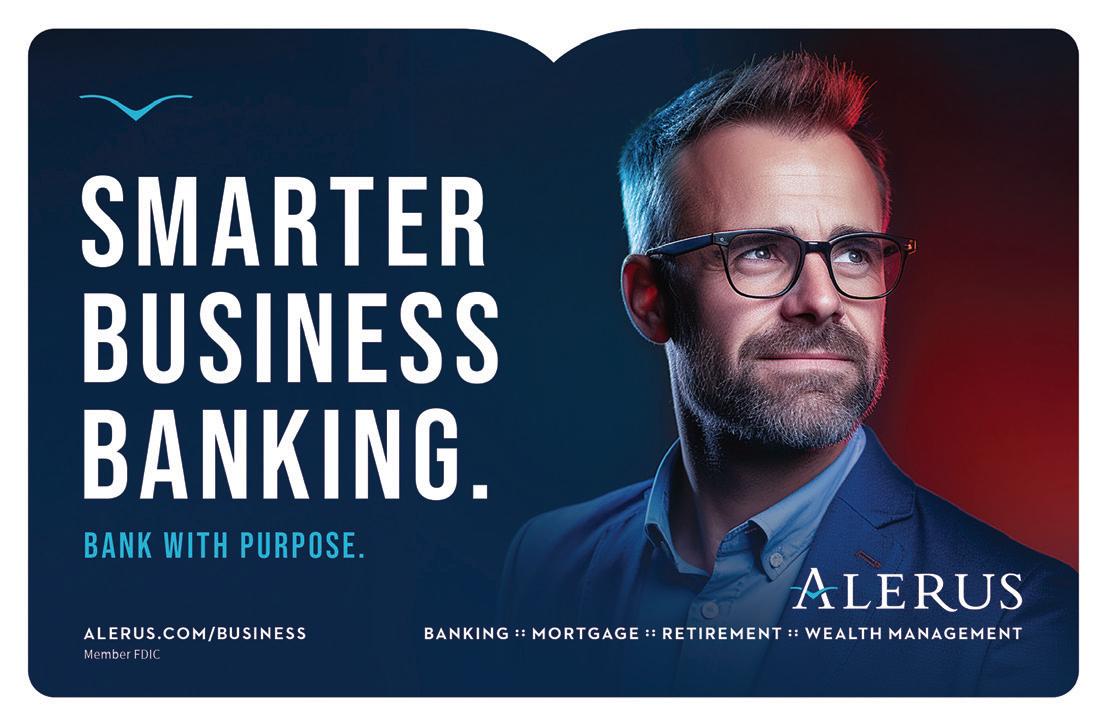 By Grant Ayers
By Grant Ayers

most consumer journeys begin with a search engine, businesses that rank high on search engines like Google can increase their online presence. This doesn't require a massive budget; rather, it's about understanding and leveraging the power of Search Engine Optimization (SEO). With the right strategies in place, businesses can improve their online visibility, draw in more organic traffic, and engage their audience more effectively.
SEO is an intricate process that involves boosting your website's visibility in search engine results. It's critical to digital marketing, as it directly impacts how easily potential customers can find your services or products online. Google uses the E-E-A-T method, measuring 'Experience,' 'Expertise,' 'Authoritativeness,' and 'Trustworthiness,' to measure SEO and serve results with strong E-E-A-T. Here, we'll explore the fundamentals of SEO to provide a more comprehensive understanding of it and how you can improve your search ranking.
• Understanding Search Intent: Are users looking for information, or are they ready to make a purchase? This understanding can shape your content strategy.
• Long-tail Keywords: Focusing on long-tail keywords (more specific, often longer phrases) can be a gamechanger, especially for niche markets or smaller businesses. They often have less competition and a higher conversion rate.
• Competitor Keyword Analysis: Analyzing what keywords your competitors rank for can offer valuable insights and help identify gaps in your content strategy.
• Content Optimization: Google has mentioned that they don't use latent semantic indexing (LSI) for sorting search results, but they do use semantic keywords and analysis to understand your content. This means that having semantically related keywords can be good for SEO, as it helps Google figure out the main idea and scope of your content.
• Structured Data & Schema Markup: Utilizing structured data helps search engines understand your site's content better, potentially leading to richer search results (like featured snippets), which can improve visibility and clickthrough rates.
• Internal Linking: Effective internal linking is an oftenoverlooked aspect that not only helps with site navigation but also spreads page authority throughout your site.
• Backlink Quality over Quantity: Focus on acquiring high-quality backlinks from reputable, relevant websites. These backlinks are seen as votes of confidence by search engines and significantly impact your site's authority and rankings.
The term “Search Engine Optimization” was likely first used in 1997, according to the Webstop Marketing Agency.
Google's algorithm uses over 200 factors to rank websites!
• Guest Blogging and Partnerships: Collaborating with industry influencers and websites for guest blogging can be an effective way to build quality backlinks and increase traffic.
• Site Speed: Fast loading times are critical for keeping users engaged. Utilizing tools like Google's PageSpeed Insights can help identify and fix speed issues.
• Mobile-First Design: With the predominance of mobile searches, having a mobile-optimized site is no longer optional. It’s about providing a seamless experience across all devices.
• User Engagement Metrics: Pay attention to metrics like bounce rate and time on site. These indicators can provide insights into the user experience and highlight areas for improvement.
• Site Architecture: A well-structured website helps search engines crawl your site more effectively. This includes having a logical hierarchy, a clean URL structure, and a sitemap.
• Security: Implementing HTTPS is crucial for website security and is a ranking factor for Google. It’s essential for safeguarding user data and building trust.
• Crawlability and Indexation: Ensuring that search engines can easily crawl and index your site is fundamental. Utilize tools like Google Search Console to monitor and resolve crawl errors.
• Adding Valuable Content: Creating valuable content often leads to social currency, but this should be seen as a bonus rather than the main goal. Typically, when individuals produce quality content, their main concern isn't the potential return. Instead, they genuinely care and want to create it. As a result, that content is usually the best, surpassing "gimmicky" content that was created for the sole purpose of selling.
• Local SEO: If your business serves a local community, mastering local SEO is imperative. This means more than just including local keywords in your content. Ensure your business's name, address, and phone number (NAP) are consistent across all online platforms, especially on Google My Business. Encourage customer reviews and engage with them to boost your visibility in local search results. Local SEO also involves building local links and creating content relevant to your local area.
• Mobile Optimization: With the shift towards mobile browsing, your website must be optimized for mobile users. This means having a responsive design that adjusts to various screen sizes, ensuring fast loading times on mobile devices, and creating a user-friendly experience for mobile visitors. Google’s mobilefirst indexing makes this even more crucial, as it predominantly uses the mobile version of the content for indexing and ranking.
• Regular Updates: Keeping your website's content fresh and updated is critical. Search engines favor

The first-ever Google "doodle" was a Burning Man stick figure, indicating the founders were at the festival.
websites that are not only relevant but also demonstrate ongoing activity. Regular updates signal that your site is a current and active participant in your niche. This could involve updating old blog posts with new information, adding new pages, or consistently publishing new content.
• Advanced SEO Strategies: In addition to the basics, consider incorporating advanced SEO techniques. For instance, understanding and optimizing for the user's search intent is increasingly important. This involves creating content that aligns with what users are actually looking for when they type in a certain keyword. Also, consider the growing importance of voice search, which requires optimizing for more conversational and natural-sounding queries.
• Technical SEO: Don't overlook the technical side of SEO. This includes ensuring your site has a logical structure, fast page load times, and no broken links. Using schema markup to help search engines understand your content and providing a sitemap can also boost your SEO efforts.
• SEO-Friendly Content Structure: Structure your content for both search engines and readers. Use headers to organize your content, make use of bullet points for readability, and include internal
and external links to reputable sources. This not only enhances user experience but also helps search engines understand and rank your content more effectively.
• Monitoring and Adjusting: SEO is not static; it's a continuous process. Utilize tools like Google Analytics
and Google Search Console to track your website's performance. Monitor your keyword rankings, understand where your traffic is coming from, and observe how users interact with your site. Based on these insights, refine and tweak your strategies for better results.
Airbnb increased its organic traffic by 80% through a meticulous SEO strategy focused on local keywords.

Evernote's surge in organic traffic can be attributed to a strategic overhaul of their blog content. By focusing on optimizing each blog post for relevant keywords, they not only increased their visibility but also provided immense value to their audience. Evernote's approach included in-depth articles addressing common user queries, which improved their search rankings and helped establish their brand as a thought leader in productivity tools.

SEO expert Brian Dean developed the 'Skyscraper Technique', a method where you find content that ranks well for keywords you’re targeting, create something even better, and then reach out to the right people. By using this technique on his own blog, Backlinko, Dean reported a significant boost in his search traffic.
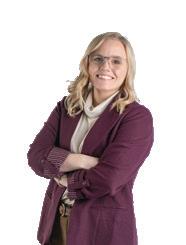
Google Trends trends.google.com/trends/
Answer The Public answerthepublic.com/
Ahrefs Free SEO Tools ahrefs.com/free-seo-tools

Zappos, an online shoe and clothing retailer, enhanced its SEO through a smart use of user-generated content. By encouraging and incorporating customer reviews and Q&As on product pages, Zappos significantly increased the volume of content on their site. This strategy not only improved their site's relevance and authority in the eyes of search engines but also provided real value to customers, aiding in their buying decisions.

Airbnb's success in local SEO is another brilliant example. Airbnb significantly improved its local search visibility by creating individual pages for different locations, complete with local information and customer reviews.
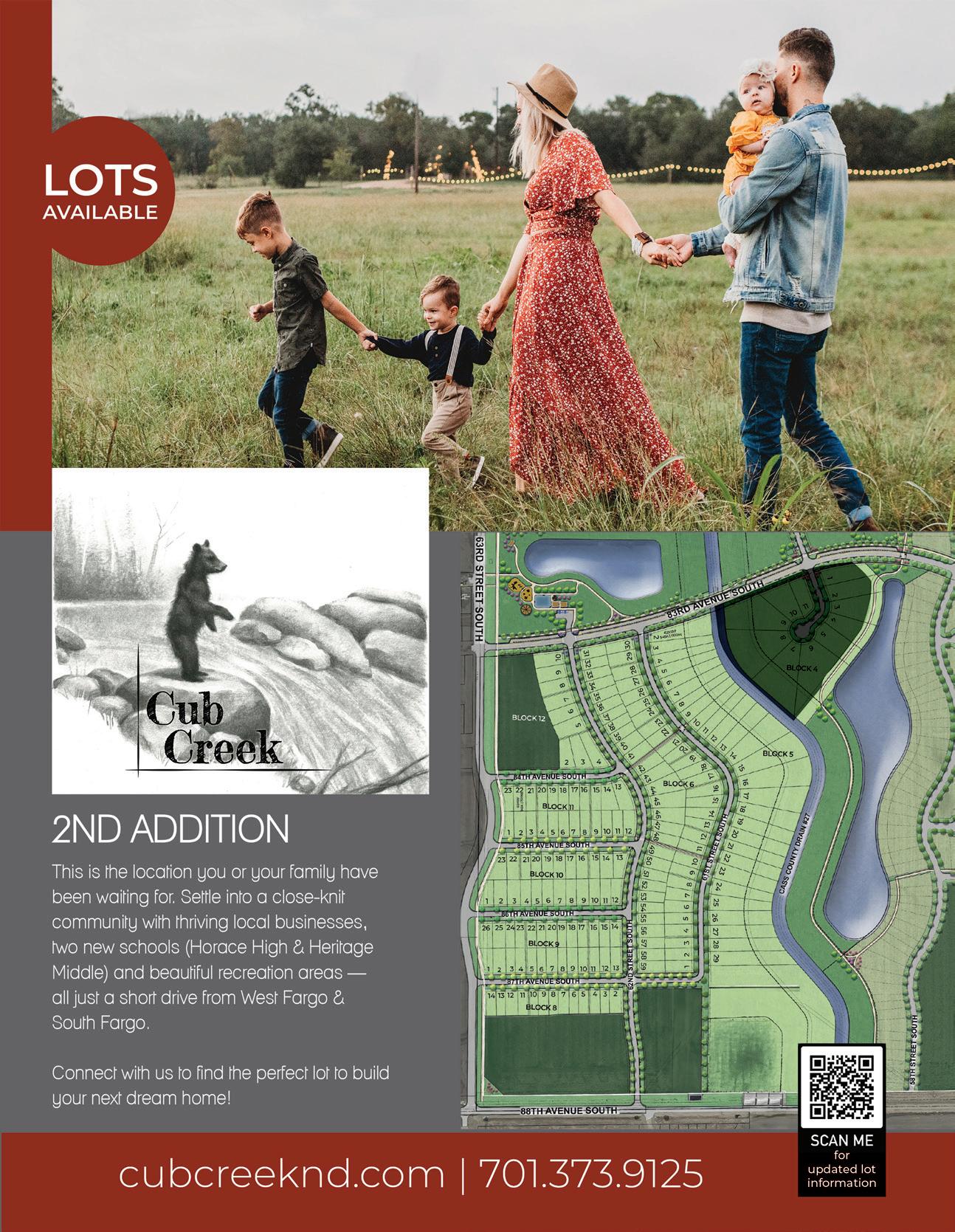

Etsy's Long-Tail Keyword Strategy
Etsy, an e-commerce website focused on handmade or vintage items, excels in utilizing long-tail keywords. Etsy optimized its product pages to rank for these long-tail queries, recognizing that users often search for very specific items.
• Voice Search Optimization: As more people use voice-activated devices like smartphones and smart speakers, optimizing for voice search is becoming increasingly important. This means focusing on natural language, conversational queries, and local search. For example, instead of optimizing for "best coffee shop NYC," you might optimize for "Where is the best coffee shop near me?"
• AI and SEO: AI is revolutionizing SEO by offering deeper insights into search patterns and user behavior. Tools powered by AI can analyze large sets of data to identify trends, predict changes in search engine algorithms, and even suggest content optimizations. For instance, AI can help in creating more effective meta descriptions or identifying untapped keywords.
• Featured Snippets and Rich Snippets: These are short excerpts that appear at the top of Google's search results and aim to answer the searcher's question right away. Optimizing for these snippets means structuring your content in a way that Google can easily extract and display this information. This includes using bullet points for lists, clear headings for different sections, and answering questions directly in your content.
• Semantic Search Optimization: Google's algorithms now focus on the intent behind a search query, rather than just the keywords. This means that your content should be structured to answer the 'why' and 'how' behind a search, not just include the keywords. Using related terms and concepts that provide context to your content can help with this.
Each example highlights a unique aspect of SEO, from content optimization and usergenerated content to local SEO and long-tail keyword strategies, offering a comprehensive view of effective SEO practices in the real world.
• Mobile-First Indexing: With Google's mobile-first indexing, the mobile version of your website is the starting point for what Google includes in its index. Therefore, having a responsive or mobilefriendly website is no longer optional. This includes optimizing images, leveraging browser caching, and minimizing code.
• Site Structure and Schema Markup: A well-organized website helps search engines understand your site's content better. Using schema markup can also enhance the way your page displays with rich snippets, which can include star ratings, images, and more.
53% of all trackable website traffic comes from organic search, according to a study conducted by HigherVisibility.
SEO isn't just about implementing strategies; it's about monitoring performance, analyzing the results, and making informed adjustments to stay ahead in the game. Here are some key aspects to consider in this ongoing process:
• Google Analytics and Search Console: These tools are indispensable for tracking website traffic, understanding user behavior, and identifying the pages that are performing well or underperforming.
• Heat Mapping Tools: Services like Crazy Egg or Hotjar can provide insights into how users interact with your website, highlighting areas that engage or deter your audience.
• SEO Audit Tools: Regular use of tools like SEMrush, Ahrefs, or Moz can help identify technical SEO issues, backlink opportunities, and keyword performance.
• Organic Traffic: Track the number of visitors coming to your site through search engines. A decline may indicate SEO issues or algorithm changes.
• Keyword Rankings: Monitor how your keywords perform and adjust your strategy to target more effective terms.
• Bounce Rate and Time on Site: These metrics can indicate how engaging your content is and whether it meets user expectations.
• Conversion Rates: Ultimately, SEO is about more than traffic; it's about conversion. Monitor how well your traffic translates into actionable results.
Search engines frequently update their algorithms, which can dramatically affect your site's ranking. It's crucial to:
• Stay Informed: Follow SEO news sources like Search Engine Journal or Moz Blog for the latest updates.
• Analyze Impact: When an update occurs, analyze your website data to understand its impact.
• Adjust Quickly: Be prepared to make swift changes to your SEO strategy in response to algorithm updates.
• Track Competitors: Keep an eye on what your competitors are doing.
Tools like SpyFu or Ahrefs can provide insights into their SEO strategies.
• Learn from Their Successes and Failures: Adapt strategies that are working for them and learn from their mistakes.
• SEO Training and Webinars: Regularly participate in SEO workshops and webinars to stay updated with the latest trends and techniques.
• Experimentation: Don’t be afraid to experiment with new strategies. SEO is often about trial and error, finding what works best for your unique situation.
• User Surveys and Feedback: RDirect feedback from users can provide valuable insights into how your site and content can be improved.
• Social Listening: Monitor social media for mentions of your brand and keywords, providing real-time feedback on user perception and needs.
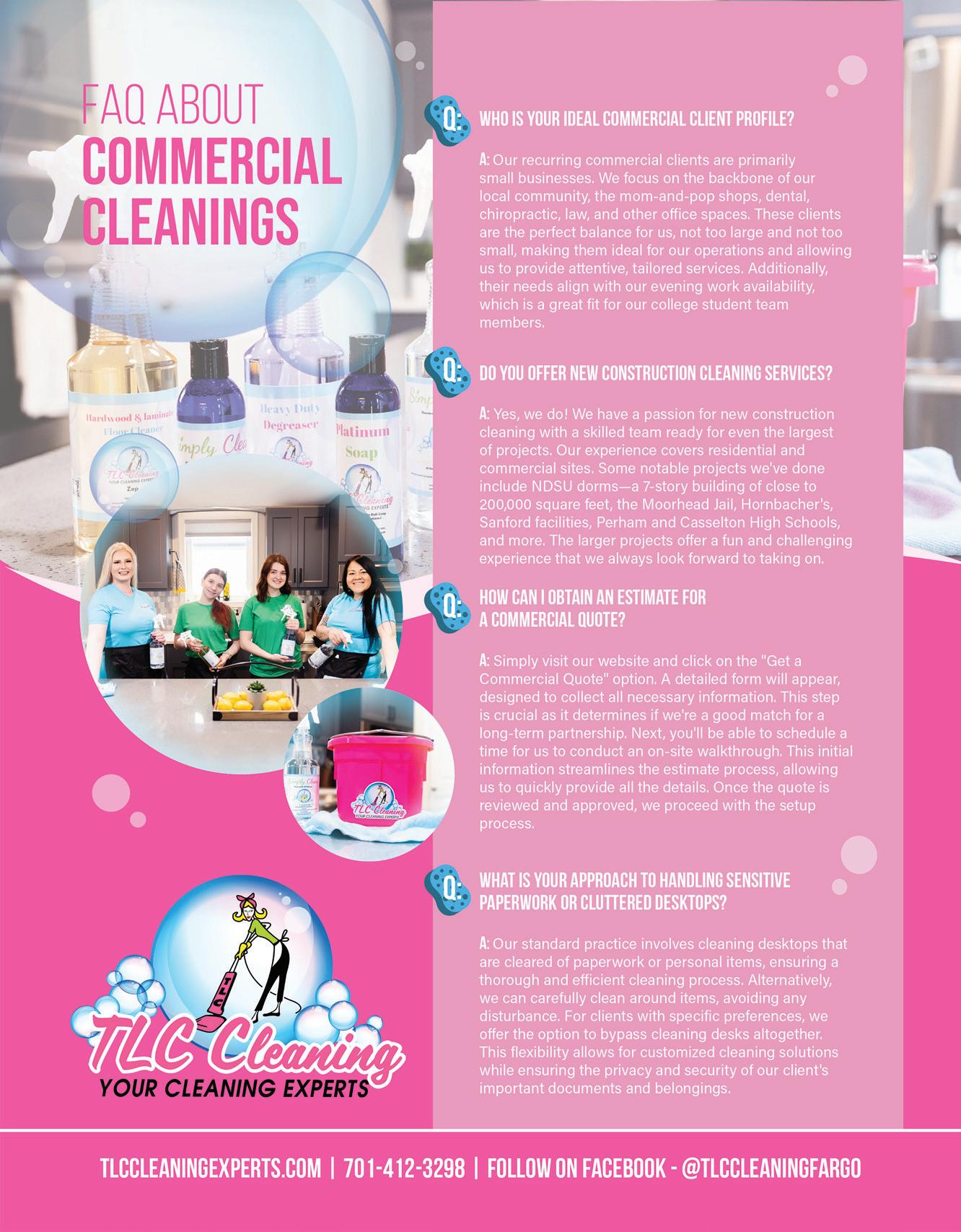
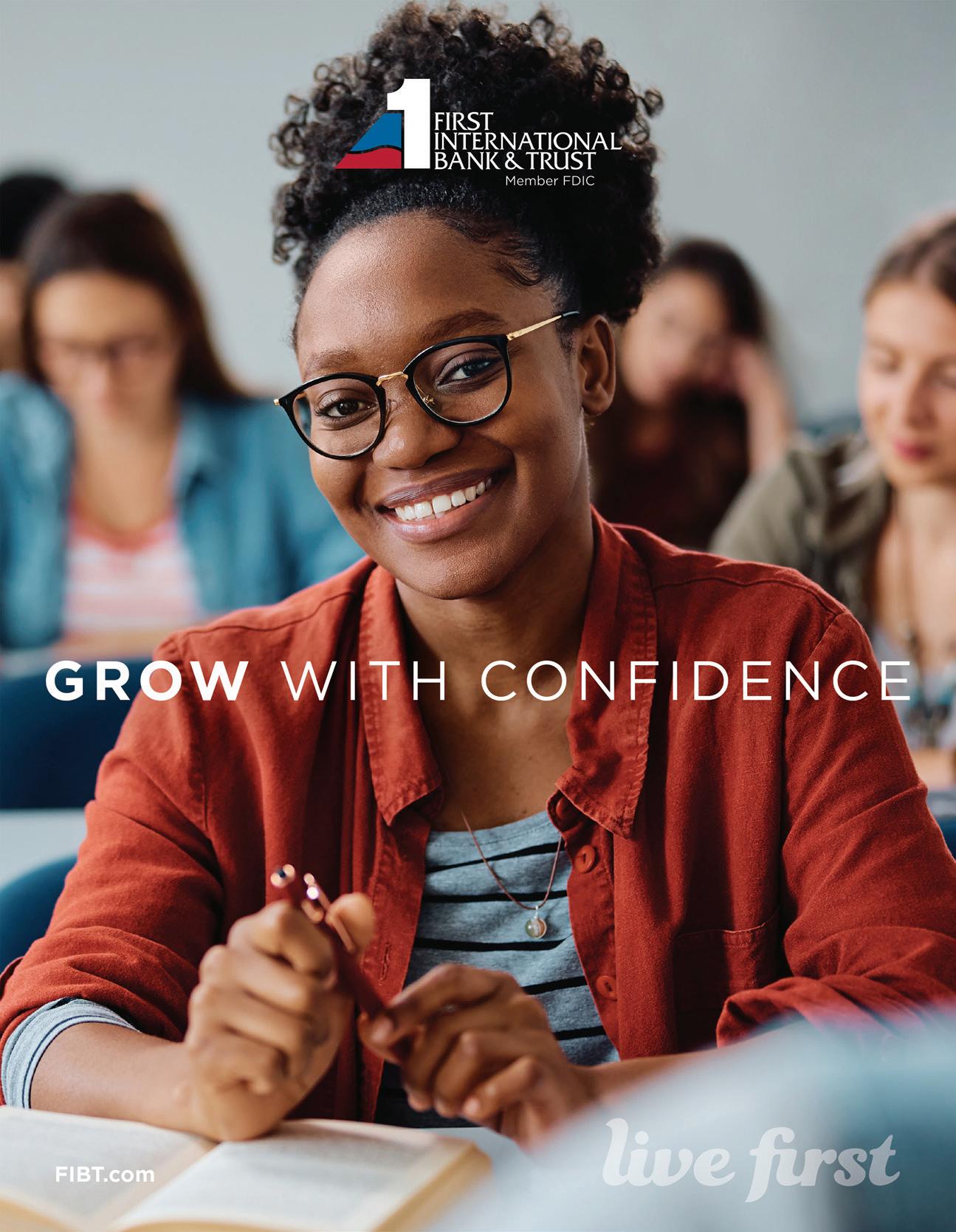
The Veterans Business Outreach Center (VBOC) program is designed to provide entrepreneurial development services such as business training, counseling, and resource partner referrals to transitioning service members, veterans, National Guard and Reserve members, and military spouses interested in starting or growing a small business. U.S. Small Business Administration (SBA) has 22 organizations participating in this cooperative agreement and serving as VBOCs.
For business owners, maximizing workforce potential is critical, with the bottom line being the ultimate measure of success. At the heart of operational efficiency is a connection between employee motivation and engagement—a correlation garnering heightened attention in today's competitive business arena. Recent findings from Gallup reveal that nearly half of US employees were actively seeking alternative job opportunities in 2021, with disengaged employees looking elsewhere for jobs.
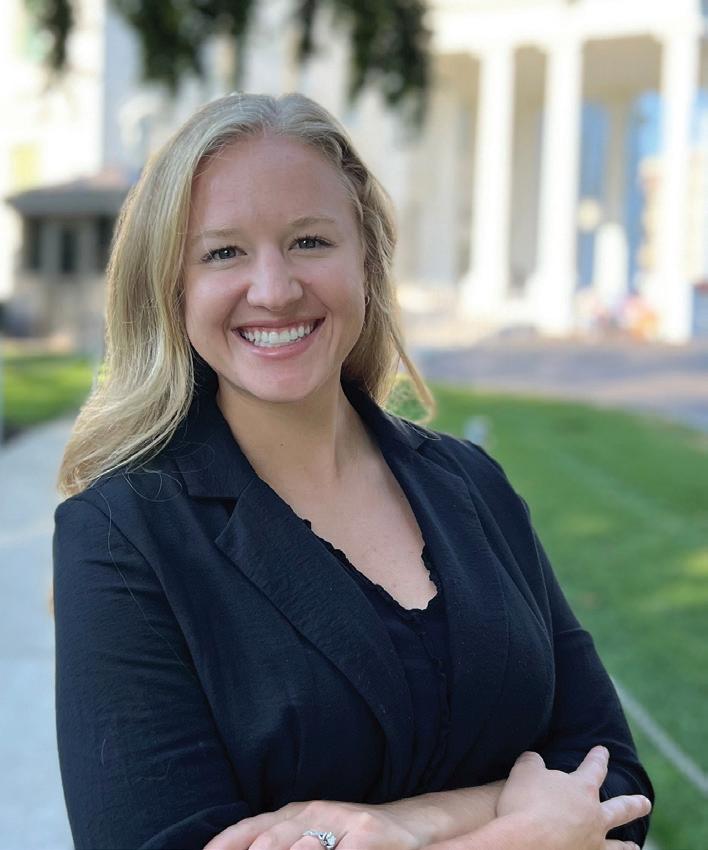
As employers aim to retain top talent, they should recognize the importance of developing a compelling employee experience through workplace engagement and positive motivation. Yet, the benefits of a highly motivated workforce extend beyond retention metrics.
Elevated levels of employee motivation are closely connected with heightened levels of engagement, which in turn can significantly impact your organization's bottom line. When an employee is motivated to accomplish a specific task, they're more likely to be engaged in the process and company.
Employee engagement can be categorized into three levels: engaged, not engaged, and actively disengaged. Engaged employees work with passion and dedication, while those who are not engaged may feel somewhat disconnected or "checked out" from their responsibilities. Actively disengaged employees, on the other hand, may demonstrate behaviors that undermine the workplace environment.
Understanding each employee's level of engagement is instrumental in pinpointing their motivation levels and developing strategies for improvement.
Suppose an employee is disengaged due to feeling undervalued or unrecognized. In that case, this can serve as an extrinsic motivator, reigniting their connection and commitment to the company and effectively reengaging "quiet quitting" employees, fostering a more vibrant and productive workforce.
One of the primary benefits of having highly motivated employees is the increase in productivity levels. When a sense of purpose and enthusiasm drives employees, they tend to exhibit greater focus, efficiency, and commitment to their tasks. As a result, businesses experience enhanced output, streamlined processes, and improved operational efficiency, ultimately contributing to higher profitability and greater growth.
Motivation can push for more positive attitudes and morale within the workforce. Employees who feel valued, appreciated, and engaged are more likely to experience higher levels of job satisfaction and overall well-being. A motivated workforce cultivates a culture of enthusiasm, camaraderie, and mutual support, creating an environment to thrive in. Moreover, when employees feel fulfilled by their roles and contributions, they show greater loyalty to the organization, reducing turnover rates and enhancing employee retention over the long term.
Motivated employees are inherently driven to seek out challenges,
embrace new ideas, and build solutions to complex problems. Their desire to excel and make meaningful contributions that propel them to think creatively, explore alternative approaches, and push the boundaries of conventional thinking.
Employee motivation directly impacts the quality of customer interactions and service delivery. When employees feel empowered in their roles, they're more likely to have positive attitudes and empathy when engaging with customers. As a result, businesses experience higher levels of customer loyalty, repeat business, and positive wordof-mouth referrals, which drive sustainable revenue growth and market expansion.
Motivated employees can further inspire leadership and build cohesive teams that work well with one another. Leaders who prioritize employee motivation demonstrate empathy, communication skills, and a commitment to nurturing talent and potential within their teams.
Motivated teams showcase a shared sense of purpose, mutual respect, and alignment toward common goals, enabling them to overcome challenges, adapt to change, and find greater success together.
Employee motivation is a driving force behind why employees behave a certain way to achieve a goal.
If you're looking to inspire greater motivation among your workforce, here are some strategies to consider implementing as a foundation:
Actively seek feedback from your workforce regarding their experiences and perspectives. By inviting open dialogue and listening attentively to employee insights, you can gain a valuable understanding of what drives and fulfills them in their roles. Use this feedback to adapt responsibilities and strategies, aligning them with individual motivations and aspirations to build a more meaningful work environment.
Cultivating positive, supportive connections between managers and their team members is essential. Encourage consistent communication and mutual respect, ensuring that managers demonstrate genuine investment in their employees' growth and success. Regular one-on-one meetings provide valuable opportunities for managers to create meaningful connections, understand individual motivations, and provide tailored support to employees.
Clarity in communication is key to mitigating frustration among employees. Set clear, transparent
expectations for performance and behavior, providing employees with a clear roadmap for success. Regularly discuss these expectations with your team members, ensuring alignment and understanding to minimize ambiguity and promote accountability. Clear expectations empower employees to confidently navigate their roles, providing a sense of purpose and direction.
Rather than focusing solely on remedying weaknesses, prioritize the identification and cultivation of employees' strengths. Encourage a strengths-based approach to talent management, where individuals are recognized and celebrated for their unique abilities and contributions. By aligning tasks and responsibilities with employees' strengths, you can create opportunities for personal growth, job satisfaction, and enhanced performance.
Acknowledgment and appreciation are powerful motivators in the workplace. Establishing formal employee recognition programs that highlight outstanding contributions and achievements, and provide incentives. By promoting a culture where small victories and milestones are acknowledged and celebrated, you reinforce a culture of positivity, camaraderie, and motivation throughout the organization.
If you're aiming to enhance motivation within your organization, these listed strategies can provide a strong starting point for you.
By incorporating these into your approach to employee motivation, you can grow an engaged workforce that's prepared for success and committed to achieving shared goals across your organization. Additionally, pushing for high levels of motivation among employees can bring benefits that extend far beyond individual performance metrics. From increased productivity and morale to enhanced customer satisfaction, motivated employees serve as invaluable assets to any organization.
701-738-4850 und.edu/dakotasvboc /dakotasvboc
@DakotasVBOC
4200 James Ray Dr Grand Forks, ND


ray for Gray, North Dakota's only 501(c)(3) nonprofit brain tumor organization, was founded by local brain tumor survivor Julie Fletcher in 2007. Since then, the organization has worked to raise awareness of brain tumors themselves, educate local communities, create connections for those battling, and raise funds to help meet the needs of brain tumor patients and their families.
That's an organization worth some publicity.
We spoke with Candice Ahmann, a member of the Board of Directors who lost her husband to a brain tumor four years ago, to learn more about how Pray for Gray makes an impact.
Pray for Gray is the only 501(c)(3) in the state of North Dakota that supports individuals with brain tumors. We have a really good executive director now so we're really trying to grow. We support a tri-state area (North Dakota, South Dakota, and Minnesota). A big part of our fundraising is used to help individuals or families who are going through what they're going through. We help them financially, but we also become a kind of family that you don't necessarily want to be a part of, but there are such good people who are a part of it.
We also provide other resources for people as well because when someone gets a brain tumor diagnosis, everything happens super fast. A lot of times, after the

diagnosis, people are having brain surgery within a week or two. It's pretty overwhelming for a lot of patients and their families.
There can be a lot of shock for people when they get a diagnosis. They can feel like their life is flashing before their eyes—especially if they start reading statistics online. There is a lot of fear but there can also be a lot of isolation because there are not as many people who know about these diagnoses. When my husband was diagnosed, he was pretty young to just have cancer in general, but people would come up to him and tell him things like how their grandmother had had breast cancer and was doing just fine. Those statements didn't help him feel better. He didn't feel like anyone knew what he was going through.
We also donate money to research and other nonprofits. This past year, we donated money to two different camps. There's one camp in particular, in the state of Minnesota, that my son went to last year, that is for kids who have had a parent, caregiver, or someone close

to them who has had cancer. It's a place for kids to go to meet other kids who know what they've gone through. The other camp is, I believe, through Sanford. One of our board member's child has gone there. That camp is for kids who do have cancer. There are nurses and staff there to help take care them.
There are a lot of people who need support. Every time I think I could step away from this organization, I hear about someone else going through a cancer battle of their own. It's not a thing that people like to talk about. We try to be that light or hope for families if we can be.
What impact have you seen the organization have on people?
We help them out financially because in addition to the costs that come with treatment and the diagnosis, oftentimes their
“Pray for Gray has made a significant impact on not only our journey, but on our family & lives. They’ve graciously given our family gifts of support, wisdom, strength, hope, empathy, love, & a sense of community without hesitation. Pray For Gray does a fantastic job advocating for those with brain tumors/cancer. There is nothing quite like the Pray for Gray Community!”
Grant & Lindsey Wosick Addison’s Parentscaregivers need to take time off from work. There are also often travel expenses involved.
We also try to be a source for them. Sometimes it feels good for people to just talk it out. We can help them slow things down because people commonly think they need to start making all these drastic changes like selling their house. They need to know that there are options and things don't need to happen right away.
I've also had people reach out to me about the aftermath. So, after someone has surgery, it's almost like a brain injury. We can help put people in touch with good sources for physical therapy for those sorts of things.
One of the things that people don't know about is that cancer is the leading cause of death for children. So, it's not isolated to a certain age range. One of our old board member's daughter was diagnosed with a tumor when she was an infant.
More research needs to be done. People need to be supported.
Check us out on our website and social media. Encourage people to reach out to us if they need help.
We have different events we do out throughout the year that are pretty fun. We do golf tournaments, we have a 5K race, we do a gala, and we actually have a scooter run. We take scooters or motorcycles and ride through town, go to the racetrack, and then they race and you can take a ride with the racers. So we do a lot of fun events throughout the year that people can come to, support, and get to know our organization in our community.
May 10 at 5:30 p.m.
Avalon Events Center 2525 9th Ave S, Fargo
Join in for the 15th Annual Pray For Gray Gala! You must purchase tickets in order to attend. Head to prayforgray.com/event/pray-forgray-gala/
Annual Pray For Gray Golf Tournament
July 29
Moorhead Country Club 2101 N River Dr, Moorhead
More information coming soon!
Pray For Gray 5K Run/Walk
Support Pray for Gray
September 14
Atonement Lutheran Church 4601 S University Dr, Fargo
More information coming soon!


arketing is the lifeline that connects businesses to consumers. Today, the approach to marketing has shifted dramatically, as has the associated cost. While big names might have the budget to pour into expansive campaigns, for many small to medium-sized businesses, marketing on a shoestring budget is the stark reality. However, with innovative strategies like content marketing, businesses can still make a considerable impact without breaking the bank.
Content marketing is a multifaceted strategy, much more than just a means to an end. It's about forming a connection with your audience, providing them with something of value, and establishing your brand not just as a seller, but as a source of information, inspiration, or entertainment. Let's delve deeper into what makes content marketing so essential in the current business landscape:
In the heart of effective content marketing lies the art of storytelling. It's about weaving your brand's values, mission, and personality into every piece of content. This narrative helps your audience connect with your brand on a more personal level. For instance, when you share stories of how your product is made, the people behind it, or how it impacts the community, you're not just selling a product; you're inviting your audience into a narrative where they play a crucial role.
One of the primary goals of content marketing is to educate your audience. This could be about industry trends, how to use your products more effectively, or even general life tips that align with your brand values. By educating your audience, you position your brand as a knowledgeable and trustworthy source, which can be a powerful tool in building long-term customer relationships.

In today's digital age, your online visibility is crucial. Content marketing boosts your SEO efforts. By creating high-quality, relevant content, you're more likely to rank higher in search engine results, making it easier for potential customers to find you.
Beyond attracting and retaining customers, content marketing can help in building a community around your brand. This community becomes a space where customers can interact not only with you but also with each other, sharing experiences, ideas, and feedback. This kind of engagement fosters loyalty and can turn customers into brand advocates.
Content marketing is not a one-way street. It allows for interaction and feedback from your audience, which can be incredibly valuable. You can gauge reactions to your content, understand customer needs better, and adapt both your content and your products or services accordingly.
The term "Content Marketing" was used as early as 1996 at a journalism conference on the future of print.
Businesses with blogs get 67% more leads than those without, according to a recent AgentDrive study.
According to DemandMetric, 70% of consumers prefer getting to know a company via articles rather than ads.
LEGO's YouTube channel, a form of content marketing, has more viewers than many large global media channels.
Content marketing doesn't exist in isolation. It's a part of your overall marketing strategy, complementing and enhancing other efforts like social media marketing, email marketing, and paid advertising. For example, the content you create for your blog can be repurposed for an email newsletter or a social media post, creating a cohesive and comprehensive marketing approach.
Unlike traditional advertising, the content you create can continue to provide value long after it's published. Evergreen content, which remains relevant over time, can attract new audiences and keep existing ones coming back, long after its initial release.
The strength of content marketing lies in its ability to build a bridge between businesses and their audience.
By focusing on providing value, educating, and engaging your audience, you lay the groundwork for a strong, loyal community that supports your brand not just as consumers, but as advocates and partners in your business journey.
Innovative Use: Encourage user-generated content through unique, brand-specific hashtags. This not only increases brand visibility but also fosters a sense of community. For example, CocaCola’s #ShareACoke campaign was a massive hit as it personalized the experience for users.
Monitoring and Engagement: Actively monitor these hashtags and engage with the audience. Responding to posts or featuring user content on your platforms can amplify reach and engagement.

Creative Contests: Design contests that encourage creativity and sharing. For instance, Starbucks’ White Cup Contest invited customers to draw on their cups and share the designs online.
Strategic Partnerships: Partner with influencers or complementary brands for giveaways. This can dramatically extend the reach of your campaign beyond your existing audience.
Storytelling with Reviews: Create a narrative around reviews. For example, sharing a customer's journey of how a product solved a specific problem.
Highlighting UGC: Use positive reviews as part of your social media content strategy. This not only showcases real feedback but also encourages others to share their experiences.
Video Testimonials: Shift from written to video testimonials, as videos can be more engaging and shareable.
Real-Time Stories: Use platforms like Instagram Stories or Facebook Live to share customer experiences in real-time, adding authenticity to your brand.
Quizzes and Polls: Use interactive content like quizzes, polls, and surveys on your social media platforms to engage and learn more about your audience's preferences.
Webinars and Live Q&A Sessions: Host educational webinars or live Q&A sessions on platforms like YouTube or Facebook Live to encourage real-time interaction.

Expert Insights: Share thought leadership articles or interviews with industry experts. This not only provides value but also positions your brand as a knowledgeable authority.
Guest Blogging: Collaborate with other businesses or influencers by guest blogging on each other's platforms, expanding your reach to a new audience.
Embracing New Formats: Platforms like Instagram Stories and Reels or TikTok offer new, dynamic ways to share content. These formats are highly engaging and can help in reaching a younger demographic.
Newsletter Sharing: Encourage subscribers to share your newsletter content. Include shareable content snippets or easy-to-share links within your emails.
Each strategy offers a unique way to connect with audiences, build community, and ultimately drive business growth. Remember, the key is to stay authentic and consistently deliver value, making your brand a trusted and relatable entity in your industry.
The Michelin Guide, originally a free booklet to encourage road travel (and tire usage) created in 1900, is an early example of content marketing!

The success of content marketing is best illustrated through real-world examples. These case studies not only highlight the effectiveness of well-executed content marketing strategies but also provide valuable insights and inspiration for businesses looking to strengthen their own content marketing efforts.

Known for its transparency, Buffer regularly shares behind-thescenes content, which has helped them build a loyal community. Their open approach to sharing company earnings, challenges, and decision-making processes has created a sense of trust and authenticity among their audience. This transparency has been key in differentiating them in a crowded market while fostering a strong connection with their customers.

Airbnb's content strategy centers around storytelling. Their platform, Airbnb Magazine, and other mediums tell captivating stories of travel, culture, and human connection. This approach not only inspires travel but also strengthens the emotional connection between the brand and its audience.

By offering valuable resources like free tools and comprehensive guides, HubSpot has established itself as a go-to source for marketing insights. Their strategy involves creating in-depth content that not only helps in solving real problems but also educates their audience. This approach has positioned HubSpot as a thought leader in the inbound marketing space, driving customer loyalty and attracting new leads.

Known for their expertise in SEO, Moz has successfully used content marketing to build authority in this field. Their blog and “Whiteboard Friday” video series offer valuable, in-depth SEO insights and tips. This consistent delivery of highquality content has not only helped educate their audience but has also established Moz as a trusted authority in the SEO world.

Red Bull is a prime example of a brand that transcends its product through content marketing. By focusing on high-energy sports and lifestyle content, Red Bull has created a brand image that is about much more than just energy drinks. Their content, which includes events like Red Bull Stratos and Red Bull Rampage, keeps the audience engaged and cements the brand's position in the lifestyle and entertainment industry.

Glossier's content marketing strategy focuses on engaging with its audience through its blog and social media platforms. By highlighting real customer stories, focusing on user-generated content, and maintaining a conversational tone, they have created a community of loyal fans. This approach has helped them build a strong brand identity that resonates with their target market.
Successful content marketing isn't just about selling a product or service; it's about creating content that resonates with your audience, building a community, and establishing your brand as a leader in your industry. Whether through transparency, educational resources, storytelling, or community engagement, these brands have shown that effective content marketing requires a deep understanding of your audience and a commitment to delivering consistent value.


As we look ahead, the landscape of content marketing is poised for even more transformative changes. Personalization and interactive content, propelled by advancements in AI and machine learning, are just the tip of the iceberg. Here are some key trends and developments that are shaping the future of content marketing:
As data analytics become more sophisticated, content marketing will shift towards hyper-personalization. This means content will not just be tailored to broad audience segments but to individual preferences and behaviors. By analyzing user data, businesses will be able to create content that resonates on a personal level, thereby increasing engagement and loyalty.
With the increasing use of digital assistants like Alexa and Siri, optimizing content for voice search is becoming crucial. This involves adapting the content to natural language and question-based queries, making it more accessible through voice commands.
Augmented Reality (AR) and Virtual Reality (VR) are set to offer immersive and interactive experiences to users. For example, a real estate company could use VR to give virtual tours of properties, while a fashion retailer could use AR to allow customers to try on clothes virtually.
The future of content marketing will see a rise in interactive elements like quizzes, polls, and interactive
videos. This type of content not only engages the audience but also provides valuable insights into their preferences and choices.
AI is not just revolutionizing content personalization but also content creation and curation. AI algorithms can now generate basic content and help curate personalized content streams for individual users, making the process more efficient and tailored.
As wearable technology becomes more prevalent, content marketing strategies will need to adapt to these new platforms. This could mean shorter, more concise content, optimized for small screens and onthe-go consumption.
Consumers are increasingly favoring brands that demonstrate social responsibility and environmental sustainability. Content marketing will need to reflect these values, highlighting a brand’s commitment to making a positive impact on society and the planet.
Inspired by platforms like Snapchat and Instagram Stories, ephemeral
content (content that is only available for a short duration) will continue to be popular. This type of content creates a sense of urgency and can drive immediate engagement.
Video content, especially short-form videos, will continue to dominate. With the rise of platforms like TikTok and Instagram Reels, creating engaging, short, and snappy video content will be key.
Blockchain technology could play a role in content marketing, particularly in terms of content security and copyright management. It also offers the potential for more transparent and customer-controlled data management.
As we embrace these changes, the potential to connect with audiences in meaningful and impactful ways is enormous. Remember, the core of content marketing is about telling a story that resonates; how and where we tell that story will continue to evolve with these emerging trends and technologies.

The landscape of content marketing has been transformed by technological advancements, offering unparalleled opportunities for businesses to enhance their content strategies. Here's a closer look at how technology is playing a pivotal role:
Artificial Intelligence (AI) tools can now assist in generating content ideas, creating basic drafts, and even suggesting improvements to existing content. For instance, AI can analyze trends and consumer behavior to suggest topics that are likely to engage your target audience. However, the human touch remains essential for ensuring that the content aligns with your brand voice and values.
The integration of advanced SEO tools has become essential in content marketing. These tools help in identifying the right keywords, understanding search intent, and optimizing content for better search engine rankings. Enhanced SEO ensures that your content reaches its intended audience through organic search.
Today's consumers expect content that speaks directly to them. Personalization engines use data like browsing history, past purchases, and customer interactions to tailor content to individual users. This technology ensures that the content delivered is relevant to each user, thereby increasing engagement and loyalty.
By leveraging data analytics, businesses can predict trends, understand customer preferences, and create content that resonates with their audience. Predictive analytics tools analyze historical data and current market trends to help businesses anticipate what their customers will want next. This insight is invaluable for creating content that is not only relevant but also timely.
Modern CMS platforms are more than just tools for publishing content. They offer features like content scheduling, multi-platform integration, and audience analytics. This helps businesses manage their content efficiently across various channels, ensuring consistent messaging and branding.
These AI-powered tools enhance customer interaction by providing instant responses and personalized assistance. They can be integrated into content strategies to improve user experience, offer recommendations, and even gather feedback.
Incorporating these technological advancements into your content marketing strategy can significantly enhance your ability to connect with and understand your audience, deliver personalized content, and measure the effectiveness of your campaigns.
Immersive Content Technologies like augmented reality (AR) and virtual reality (VR) are beginning to influence content marketing. They offer immersive experiences, making content more engaging and memorable. For instance, a real estate company can use VR to give virtual tours of properties to potential buyers
With social media being a key platform for content distribution, analytics tools provided by these platforms or third-party services offer deep insights into content performance. Understanding metrics such as engagement rates, shares, and audience demographics helps in fine-tuning content strategies for better performance.
With the growing preference for video content, easy-to-use video production tools have become vital. These tools enable businesses to create high-quality videos without the need for extensive technical expertise or resources.
Content marketing offers a more subtle, value-driven approach in a world where consumers are bombarded with ads. By focusing on building relationships and offering real value, businesses can attract, engage, and retain customers more effectively than ever before. Remember, in content marketing, your audience is more than just buyers; they are a community you are part of and grow with.

Cole Mercier is a member of the Fargo Moorhead West Fargo Chamber of Commerce's Young Professionals Network, a networking group that exists to bring together the leaders and influencers of tomorrow.

 By Brady Drake
Nodland
Geneva
By Brady Drake
Nodland
Geneva


Q: Tell us about yourself and your current role.
A: I was born and raised in a small town, Glenwood, MN. I had a great support system with my family, friends, and teachers. I was always involved, taking leadership opportunities seriously and dedicating my time to being a high performer in academics, the arts, and other activities. This laid a foundation for my current involvement and passion for the community.
I have been in the metro area since 2019. I absolutely love living, working, and playing here! I focus on internal communications and change management in my current full-time role at Dakota Supply Group (DSG). We doubled in size in the last three years and only have more growth on the horizon. I develop strategic messaging, manage corporate communication campaigns, and administer culture-driven initiatives that engage our thousand or so employee owners across eight states.
Q: How did you become involved with YPN?
A: I moved to the area after graduating from the University of Minnesota Duluth (UMD) in December 2018. I knew no one except my wife (then girlfriend), who was wrapping up her senior year at Minnesota State University Moorhead (MSUM). The summer prior, I had interned with the Alexandria Lakes Area Chamber of Commerce and became quite involved with their young professionals' program because of it. If I wanted to optimize my network and create meaningful relationships, I knew I needed to be present, familiarize myself with every aspect of the community, and challenge myself to learn something new (or meet someone new) every day.
Q: What motivated you to choose your current career path?
A: My educational background is non-traditional, to say the least. With a theatre degree in one hand and a
psychology degree in the other, and having graduated in just three short years, I had to be nimble and openminded about how I could apply what I learned in school to the business world.
My passion for storytelling and hands-on collaboration, combined with my study of human behavior and being data-centric and analytical, was a well-rounded fit for the field of marketing. So, I went old school and cold-called two marketing agencies in town and asked if I could shadow them to learn the trade. They took me up on it.
Swim Creative and Flint Group were wonderful resources during my last semester and helped me land the first “real” job I ever applied for; I got the opportunity of a lifetime at Aldevron in Fargo. The timing of being there could not have been richer with experience. Ellen, my incredible leader, opened doors for me to learn and grow, exploring nearly every discipline of modern-day marketing and communications in a period of exponential growth. I eventually found my niche in internal communications and change management; the rest is history. DSG was a natural career progression a few years later, and I have been able to develop these focus areas even further since I started in 2022.
Q: Can you share a significant challenge you’ve faced in your career and how you overcame it?
A: My biggest hurdle early on was establishing credibility and marketing myself, as entry-level job titles, internships, and diplomas only get you so far. I was constantly asking myself, “How do I make this work?” I had to discover a formula that balanced marketing transferable knowledge and skills, establishing my work ethic and character while being genuine and truthful. It became more about getting my foot in the door, telling my story, and demonstrating initiative, ambition, and application rather than relying on the credentials on paper alone.


My advice to young professionals who relate to this is to promptly exit your comfort zone and step into the shoes of those you aim to influence. What do they want? What motivates them? How can you apply yourself, add value, and solve their problems using your talents?
Q: How do you stay updated and continue to grow professionally in your field?
A: I attend conferences, listen to podcasts, read books, watch courses on LinkedIn Learning, and engage with peer groups and discussion forums online (always take notes!), but, most importantly, I continue networking with and asking questions to successful people who are 5, 10 , sometimes 20 years ahead of me in their careers. When you find a niche, learning from others’ real experiences and life lessons is as important as, if not more important than, what you hear from well-polished “official” sources. My other personal strategy is being brave enough to fail but learn from it. A lot of communication and business comes down to human interaction and perception, which can be messy and subjective, so always be willing to experiment, make mistakes, and continuously improve your practices along the way.
Q: What has been your most rewarding experience with YPN so far?
A: I served on our leadership committee as a memberat-large for a two-year term before being elected by my peers to vice chair. In that role, connecting our members to meaningful volunteer opportunities and introducing them to nonprofits and charitable causes that impact real people in our community was very rewarding.
Q: How has being a part of YPN impacted your professional network?
A: Jordan Harbinger, a podcaster and professional development coach I subscribe to, often says to dig the well before getting thirsty. YPN gives you a shovel—that opportunity—to plant and nurture a quality network early in your career. The relationships I built early on have led me to gain more perspective, career development opportunities, and leadership experiences.
Q: Can you share a memorable connection or opportunity that arose through YPN?
A: I have countless memorable connections and moments from the past five years, but one aspect that comes to mind is knowing I had people rooting for me from Day one. It says a lot about the community and about the Chamber. Being 21 when I joined, I was among the youngest and among the first Gen Z’ers in YPN. I felt welcome even though I was an outsider on multiple levels, having grown up in a smaller community, having graduated college on the opposite end of Minnesota, having an arts and science background instead of a traditional business upbringing, and being young, even for YPN. Having supporters early on gave me the confidence to apply and get accepted into Leadership FMWF. It also led to more volunteer leadership opportunities in other organizations to make a difference. That is the power of networking and building an informal personal board of directors!
Q: Where do you see yourself professionally in the next five years?
A: In five years, I see myself continuing to learn and grow as a leader. I am passionate about uplifting those around me and ultimately delivering industry-leading excellence in communications and organization. I like being in an environment that is experiencing growth, controlled and uncontrolled change, and establishing forwardthinking practices and programs that help executives and employees win together!
Q: Any final thoughts or messages you’d like to share with the community?
A: Business gets people here. Art makes people stay. With a strong economy and business-friendly environment, everyone benefits from this, and by supporting local nonprofits, charitable causes, and the arts, bringing people together, we maintain what we call a thriving community. Oh, and you can catch some of that community by visiting me on the weekends pouring craft beer at Junkyard West Fargo!

n a political climate where polarization appears to be the norm and misinformation can spread quickly, it can be easy to look at local, state, and national elections as something to dread rather than a right to be exercised. However, for many in the community, it is a reason to celebrate.
“For many New Americans, getting their citizenship and being able to participate in our democracy, is exciting for them,” Fowzia Adde from the Immigrant Development Center said. “They are so excited to come to this country, to be here to work, to understand, to pass the test for citizenship. It’s an achievement.”
However, having the right to vote doesn’t mean exercising it is easy, especially when you come from another country and don’t speak the same language. The League of Women Voters of the Red River Valley is trying to take that into consideration with a new pilot project meant to enhance the League’s VOTE411.org initiative.
VOTE411.org is the National League of Women Voters’ one-stop shop for election-related information, and where the North Dakota League publishes its voter guide for North Dakota’s June and November elections. In 2020, the League of Women Voters of the Red River Valley used VOTE411.org to cover Cass County
candidates and some of the state-level races for the General Election. In 2022, the North Dakota League covered all the races in the state, which included over 2,000 candidates in the Primary and 760 in the General Election. The League asks each candidate running for election to answer five questions and publishes the responses on VOTE411. Users can then enter their addresses to see the races and ballot measures that will be on their ballot and compare candidate responses.
“The mission of our league is to make voting accessible for everyone,” League RRV President, Randilyn Dombek said. “So having information about candidates really helps people feel confident about knowing who they are or are not voting for, and helps them feel more empowered to actually go use their voice and vote in the local elections. The main thing for us is that it is nonpartisan. We ask every candidate regardless of party to participate, and everyone has the same opportunity to present their views on things for their constituents.”
“And we don’t touch their responses, so it’s the candidate’s own words,” Whitney Oxendahl who coordinates VOTE411 for the North Dakota League and candidate outreach for Red River Valley said. “Spelling mistakes and all.”
When the 2023 North Dakota Legislative Assembly passed a law creating a requirement for naturalized US citizens
BY BRANDI MALARKEY, OWNER, IT'S ALL MALARKEYto update their ID to vote, the Immigrant Development Center took on the task of trying to translate paperwork explaining the new law into languages other than English.
“The Secretary of State sent over 19,000 letters to citizens just in Fargo,” Fowzia said. “19,000 citizens just in this town need to get a special ID just to vote. But many don’t understand the English in the letter and haven’t changed their ID yet.”
Realizing the language barrier is one of many hurdles New Americans face in participating, the Immigrant Development Center and the League of Women Voters of the Red River Valley have teamed up to create a pilot project to translate candidate responses for VOTE411.org into additional languages for the November 2024 election.
With the aid of a grant from the Cass Clay chapter of the Awesome Foundation, who named the League their January 2024 grantee, the pilot project will begin with state legislative races and focus on Cass County. The League and the Immigrant Development Center will partner to determine which languages will be most beneficial to begin with.
“What we are hoping for from this pilot project is that people will see its value and we can use it to find funding for additional languages in the future,” Fowzia said. “I love sharing the League’s vision


statement,” Oxendahl said. “We envision a democracy where every person has the desire, the right, the knowledge, and the confidence to participate. So I feel this really fits in with the vision of the League—trying to give people everything they need to be a part of our democracy by making candidate information accessible to those in our community who might not otherwise have access.”
“If we believe in the democracy that we live in, believe in America, we have towork hard to make it the best by making sure people have a voice,” Fowiza said.
While the language pilot program is targeting the November election, the North Dakota candidate information will be published in English in mid-May of 2024 for the June primary election. The League of Women Voters of
the Red River Valley also hosts local candidate forums prior to both spring and fall elections which they published online, a monthly program called “First Fridays” at noon at the Sons of Norway in downtown Fargo (which includes a digital participation option) and provides a bimonthly newsletter which focuses on community storytelling and city government. Learn more at lwvnd.org/rrv
The Cass-Clay chapter of the Awesome Foundation awards a $1,000 gift each month for awesome ideas of all sorts. Grant recipients do not need to be associated with a nonprofit. Applications can be made at awesomefoundation.org/en/chapters/ cassclay.
 Randilyn Dombek (left) and Whitney Oxendahl (right)
Whitney Oxendahl (left) and Tolu Afolabi (right) (Immigrant Development Center)
Randilyn Dombek (left) and Whitney Oxendahl (right)
Whitney Oxendahl (left) and Tolu Afolabi (right) (Immigrant Development Center)
call it a one-day Jubilee," said Frederick Edwards Jr., the founder of Fred’s Dissonance, of the 5th Annual Fargo Juneteenth Celebration that will be hosted at NDSU's Renaissance Hall. Fred’s Dissonance is organizing the event on June 15 to celebrate African American impact and promote cultural exchange and understanding.
Begun in the late 1800s but only recently recognized as a federal holiday, Juneteenth aims to commemorate the legacy of enslaved Americans by way of Africa by bringing people of diverse backgrounds together in a safe and inclusive space. It celebrates African American heritage and experiences while welcoming everyone in the community to participate.
“My favorite thing is seeing people with different mindsets come together and connect in real-time. We don't want people to second guess whether or not they belong,” Fred said of the previous four Juneteenth celebrations. The 2023 Juneteenth celebration
brought 1,200 community attendees. Juneteenth aims to create a brave space for exploration through art, conversation, and cultural activities. It provides an opportunity for people of all ages, cultures, and backgrounds to come together without the pressure of alcohol. Attendees can expect to learn about different spectrums of black cultures, have fun, and engage with the true narrative of African American history. The event features various activities, performances, and food vendors.
“We’re going to showcase those stories in a beautiful way,” Fred said.
Artists are commissioned each year to add to the event narrative. The 2023 event featured a rocket ship elevator and a maze based on hair braid patterns. In addition to the work of new artists, 2024 will feature an interactive art installation from Sounds Engagement.
While the event is offered free to attendees, community donations and sponsors help pay artists for their work, provide meals for kids under 16, and support activities for both children and adults. The Cass Clay chapter of the Awesome Foundation has named
BY BRANDI MALARKEY, OWNER, IT'S ALL MALARKEYthe 5th Annual Fargo Juneteenth Celebration as their February 2024 grantee. The $1,000 grant will be used to help support children’s activities at this year’s celebration.
The community can support Juneteenth by donating, volunteering, or spreading the word on social media. Everyone is encouraged to participate and contribute to making Juneteenth a memorable and impactful celebration of culture and heritage.
In addition to the 5th Annual Fargo Juneteenth Celebration, Fred’s Dissonance is also helping curate the 2nd Annual Film & Art Festival in Moorhead and Jamestown North Dakota’s Juneteenth “Art to the Future” event, both of which will take place this year. They are also working on creating a free manual for small towns on how to run a successful Juneteenth event of their own.
“My hope is that in five years, Fred’s Dissonance won’t need to be a thing,” Fred said. “That we will have so many cultural events happening in the community, from the community, it won’t be needed. I hope so.”

Supporters are welcome to learn more and sign up to help with the event through the website fredsdissonance.com or email Fred directly at fredmotivates@gmail.com
@fredsdissonance /fredsdissonance
The Cass-Clay chapter of the Awesome Foundation awards a $1,000 gift each month for awesome ideas of all sorts. Grant recipients do not need to be associated with a nonprofit. Applications can be made at awesomefoundation.org/en/ chapters/cassclay.
Mark your calendars for these Juneteenth events:
5th Annual Fargo Juneteenth Celebration
June 15, 12-6pm
2nd Annual Film & Art Festival in Moorhead, MN
June 17, 4pm-8pm
Bismarck Juneteenth
June 19, 5pm-9pm
Jamestown Juneteenth, “Art to the Future”
June 22, 3pm - 6pm

WOMEN YOU SHOULD KNOW
EMPOWERED BY

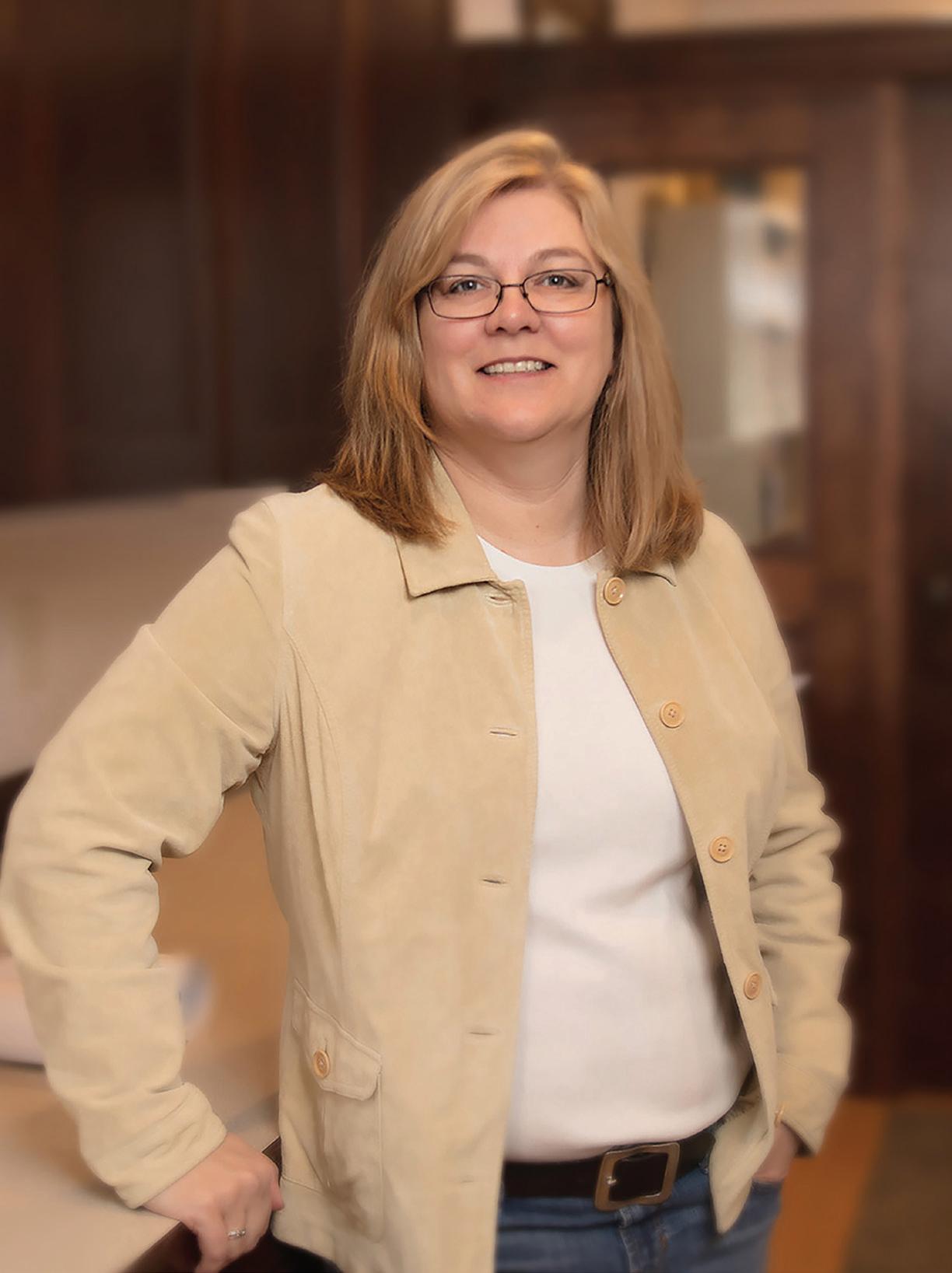
HEPPER OLSON ARCHITECTS
Bobbi Hepper OlsonBobbi Hepper Olson knew she wanted to be an architect. Her passion for the profession started in fifth grade before she even knew what being an architect entailed.
“Architecture is problem-solving,” Olson said. "Working to create a building that’s safe, meets the needs of the client, and functions really well. I was always interested in buildings and their environment.”
Against the backdrop of the Red River Valley’s rural architectural history, Olson realized that the right built environment didn’t always mean new construction.
Over the last two decades, she has built a career that marries modern architectural practices with historic preservation to help revitalize rural communities in our region.
The Dakotas are dotted with small, rural communities. A church or two, an old brick school, some houses, and that iconic Main Street that lives in our cultural memories. Growing up in one of these towns, Olson learned to appreciate the important part buildings played in her community. Architecture created a space for people to come together. When neighbors might be miles away from each other, churches and other buildings offered community and connection.
Looking back, the buildings that sparked her imagination weren’t flashy or ornate. Their usability gave them substance, though. They had good bones.
“I love to find new life in these little towns,” she said. “I was fortunate to be involved with the restoration of storefronts along Third Street in Grand Forks after the flood of 1997. I researched what some of those
buildings looked like over the years and tried to take them back to a certain era.” Peeling back the façade and layers of paint like the pages in a book, was a fascinating and rewarding process. Olson decided these were the spaces she wanted to help create.
As her career progressed, Olson also realized the need to listen to herself and build an environment that she could thrive in. She’d joined a local architecture firm after college. What started as a small team, grew over the years. Eventually, Olson found she wasn’t able to oversee the whole project from start to finish, which was one of her greatest joys as an architect. She also had a young family, and it was important to be present as much as possible in her role as mother and wife. In order to design a practice that fit her professional and personal needs, Olson went out on her own as Hepper Olson Architects.
Housed in a renovated 1890s stone bank in Buxton, ND, the firm represents a marriage of history and innovation, the modern revitalization of our rural communities. The team’s main focus is working with residents of small towns in North Dakota and Minnesota both for new construction and renovation.
“All across the Midwest, people are leaving the smaller rural communities,” she said. “They’re gravitating toward the bigger cities like Fargo and Grand Forks. We’re losing some of that great craftsmanship. I always get excited if a small community calls me. They’re trying to figure out what they can do with an old building they’re afraid is going to be torn down. I really enjoy being part of those projects.”
Pop culture views of architecture might be all drawing and math, but Olson argues that communication and the ability to synthesize information are far more important when creating usable spaces.
“You have to learn to listen,” she said. “You have to ask a lot of questions. You have to be very curious. With modern technology, you can envision a lot of things without a piece of paper and pencil. Architects are able to put more time and effort into creating greater buildings and a better-built environment. Now we can design and illustrate a 3D building.”
But while a computer can help bring a design to life, the architect is the one to take all the pieces into consideration and presents the ideal built environment. Something they’ve always done.
“Another interesting thing about examining old buildings is you also get to see where things fail, where they deteriorate,” she said. “We learn the most from our mistakes. I always tell people that if you haven’t made a mistake then you probably haven’t learned much. At the end of the day, don’t be afraid to take the opportunity in front of you.”
Learning from the past, embracing the present, and looking toward the future, Olson sees great potential for the buildings, communities, and people of North Dakota.
Learn more about her most recent 3D the 130-year-old Grue Norwegian Evangelical Lutheran Church building at historicgruechurch.org Better yet, stop by the fourth Sunday in June for fresh lefse, live music, and a tour of the historic grounds during the 4th Annual Lefse and Lemonade event
ohn Machacek, Chief Innovation Officer for the Greater Fargo Moorhead Economic Development Corporation, has worked with countless startups throughout our community over the years. He knows their ups, and their downs, but most of all, he knows the questions to ask them. Here are John Machacek’s 10 questions for Lisa Esberger, CRO and Founder of Verdethos.
By John Machacek by Josiah Kopp
Photo
by Josiah Kopp
Photo

Will you please tell me your Verdethos elevator pitch?
Verdethos is a scalable supply chain management platform that addresses the challenges of sustainability, automation, and compliance by providing source-to-shelf traceability of raw materials. We serve as the critical infrastructure for global businesses to manage their internal and external workflows by providing a full chain of custody for sourced materials. Our platform connects trading, operations, sustainability, and procurement internally, while also linking supply chain partners externally.
We basically get agribusiness and energy companies to stop emailing Excel spreadsheets back and forth.
02
Can you give me an example of the work you may do for a client?
A customer is a large global company that refines palm oil and sells oils and other palm-based ingredients to companies like Unilever, Proctor & Gamble, Mondelez, Ferraro, etc. Many of the refineries we talk with download data from inventory systems like SAP and manage most of their business on Excel spreadsheets and software that each serve a single purpose.
We looked at how departments within agribusiness companies track information, interact with one another, make decisions, and record events. We built a platform that takes their internal processes and workflows and puts the management of these businesscritical processes all on one platform.
With Verdethos software, people performing functions for sustainability teams, operations, trading, sourcing, procurement, and others all interact with each other on one platform in real-time. Their supply chain partners, like their suppliers (palm oil mills and kernel crushing plants), buyers (trading companies and consumer package goods companies), and auditors/ graders also have logins to participate in real-time. We’ve also developed a mobile app where farmers and truckers in Southeast Asia and Latin America can track and timestamp their deliveries. Each company decides which employees have access to perform which job duties, what data is shared with outside companies, and what business rules to apply to their workflows.
We provide static traceability which means that for every processor, we have mapped out the relationship of each party that provides materials to the processor. For palm oil mills, we provide a map of dealers, cooperatives, and estates that supply palm to the mill. Each individual entity has a profile on our system which lists their business information, certifications, and relationships. We also help the refineries monitor the land for deforestation and other issues.
We also provide a transactional chain of custody, meaning that for each material, we provide ledgers of what is available at each location that can be filtered by quality metrics and certifications. As the material is processed/split/mixed with other ingredients, a record of the material is included on the ledger for each step it had been involved with. For palm oil, if I’m Unilever buying refined palm oil to use in producing soap, I’d be able to access the shipping record to see all materials that contributed to my batch along with every document, certification, and piece of data associated with each processing step— to whatever degree each seller in the chain permissioned the information.
Here in the United States, we plan to focus on (1) biofuel sourcing, chain-ofcustody, and compliance, (2) row crops
used for food and other purposes, and (3) identity-preserved materials like specialty and organic ingredients.
What is driving this demand for this
type of service and technology? Is it from corporate policy, is it consumer-driven, or is it regulations?
All of the above. As far as regulations; the European Union passed a deforestation-free sourcing regulation, called the EU Deforestation Regulation (EUDR), in mid-2023. This requires all imports and exports in the EU of soy, palm oil, coffee, cocoa, timber, paper, beef, leather, rubber, and charcoal, and their derivatives, to be sourced from areas that have been deforestationfree since January 2020. This is a huge lift for most companies, and they need to be able to show proof for their shipments starting in December 2024.
So think… printer paper, shampoo, car tires, biofuels, Oreos, Nutella, soy milk, McDonald’s frying oil, packaging, furniture, building materials—this regulation impacts most industries and consumers globally. The US and other countries are also looking to introduce a similar but less strict set of regulations that recently gained bipartisan support.
We help companies digitize their sourcing processes and workflows, and we saw the EUDR as the lever to get many companies’ finance departments’ approval to finally digitize their supply chains while they have funding allocated to meet the regulatory requirements. We provide an ease of doing business and help them scale the complex processes required for these regulations now. And for the future, we make it easier to adapt data to meet new regulatory requirements and streamline their overall supply chain
management.
With the corporate policy and consumer-driven aspect; we’ve seen a significant increase in large global brands formally sharing commitments to science-based targets and requests for fully traceable ingredients. Since news events like COVID and the Evergreen blocking the Suez Canal, companies and consumers have also become quite aware of the impacts supply chain disruptions can have on shortages, empty shelves, and prices. With cleaner data management, we help companies detect disruptions earlier so they can react more expediently.
As you’ve been working with countries around the world, what have you learned to help with that process?
Stay curious. We’re confident that we’ve built an extraordinarily valuable solution. But the second we assume we know what our customers need, rather than taking the time to ask them about their most pressing pain points and ask good clarifying questions, we lose a pulse on the insights that shape our future. Our platform is built to serve so many people from cultures all across the world—from the field to the board room. Every conversation we have contributes to what we build, how we build it, and when we prioritize what features. I’ve also learned the hard way that having a solid way to document and categorize what we’re learning would’ve been super helpful to have done from the start.
The most honest conversations I’ve had with people often were not in offices. They involved cooking or sharing a meal together with people very different from myself in unexpected places. The features we build to prevent things like
illegal deforestation could cause families to lose their land if we’re not careful. Our team is made up of humans too, and we won’t get everything right, but the best we can do is listen well and build from there. I’ve learned a lot about potential unintended consequences our platform could have—for better or for worse—over food.
05
Your cultural experiences, and your appreciation and curiosity of that, remind me of how you told me last year about an interesting work or live abroad type program. What is that program and how was your experience?
Remote Year is a coworking/co-living program where participants travel with a cohort and live in a different city each month for either a 4-month or 12-month period. Each group has a team leader hired to travel with the group and facilitate activities and operations for the cohort. In each city, they also provide a coworking space with 24-hour access and reliable Wi-Fi, so that each person can continue to do their own job remotely throughout their time abroad. They also have a 2-person city team on staff in each location to share cultural norms, safety tips, points of interest, and food suggestions, and they run local programming and sidetrips for the group.
When I joined Remote Year, I was recently widowed and exploring how I wanted to spend the rest of my work life. I originally entered the financial industry because I was looking for a quick way to pay back student loans. I enjoyed working with people and had a knack for numbers, and 12 years later, I was managing operations at a large
investment firm and lacked purpose. After losing Chris, I was looking for ways to spend time abroad that were affordable and that were focused on experiencing local cultures versus being a tourist. I found Remote Year online and remember sitting in bed on a Sunday watching video after video and thinking, 'Hmm, I wonder how I can get out of my lease early.'
I was in a cohort traveling with 35 people for 12 months in 2018 and 2019. We spent three months in Europe, one month in Africa, four months in Asia, and four months in Latin America. Our group had a mix of entrepreneurs, software developers, designers, business professionals, two teachers, and even a realtor, who all found ways to work remotely. Ages ranged from 20-67, and we even had a mother and daughter traveling with our group.
I’d rent a moped or find locals who spoke English to take me out to rural areas where I experienced families in developing parts of the world farming, milling, delivering things like palm fresh fruit bunches, corn, rice, pineapples to processors, etc. Many people were burning forests near their land because the clearest way to make more money for their families and communities was to burn the land close to theirs and plant crops or palm trees. They assumed that if they grew more, someone would likely be willing to buy what they were selling. I also experienced a lot of concern with people saying they were worried they’d have to sell family land to larger companies to continue supporting their families, and when I arrived back in the US, I started looking into why.
06
Going off of the word “remote," you and your business partners have built your company remotely and if I recall
correctly,
it was something like a good year or so until you’d even met them in person. I’m starting to work with more startups where their partners are geographically scattered elsewhere. How has the process been to build a company remotely with your business partners?
Four years ago, I was comfortable doing business remotely, but I never thought I could start a business without meeting my partners in person. When I returned to the US to start a business, I panicked when my bank account started dwindling, and I took a job working for another financial company in January 2020. By March, we all worked remotely, and by September I had resigned to enroll in a remote FinTech bootcamp through Columbia University. The course focused on Python development, machine learning, database management, and blockchain.
I met my founding partner and CEO, Aidan, through the course. We worked closely on two projects together, and following the course, I learned that we were looking to solve similar global problems from opposite sides of the industry. He was thinking from the top down, as he had worked as the head of trading in Africa for an industry giant, and I was looking to change it from the bottom up. We spent about two years focused on industry research looking for a solid blockchain-friendly CTO.
16 months ago, we met Kevin, our CTO, through an industry friend, and learned that he had patents on the original mobile tap-to-pay technology, and had been the head of engineering for the unicorn startup that scaled early wallet technologies. We were honored to have him join our founding team, and we all met for the first time in person in New York a little over a year ago. We
individually live in Fargo, New York City, and a suburb of Atlanta, and continue to operate virtually. Had it not been for the Zoom culture ushered in by COVID lockdowns, I doubt we would have met or started fathomed building a company together.
We believe our business is stronger because of the different, backgrounds and experiences, and therefore, different perspectives. Two common factors we all share is that we’ve all lived abroad at some point, and had left large enterprises to segue into the startup space mid-career.
07
When I first met you in 2022 after a visit to Fargo, I knew an early connection you were looking for was to AgTech software startup Bushel, and that has developed into a nice relationship/partnership. What can you tell me about that and the value of partnerships like this?
My first time in Fargo had been with ILT Academy for 2022’s Prairie Capital Summit. Quite a few people were mentioning Bushel, some saying they’d be a good connection to meet and others saying, “Oh, they’re a huge competitor of yours.” I first came across Bushel earlier that year when we were doing onsite research at grain elevators in Iowa and seeing them during our competitive market analysis. Some very friendly North Dakotans quickly set up meetings with their team, and we quickly learned that we’d make far better partners than competitors, as they’re working with different parts of the supply chain in the US than us, and our work abroad also doesn’t overlap.
There are areas where we could overlap if we get over our skis at Verdethos, but we firmly believe in the strength of strong partnerships as critical to our long-term success. Since relocating to Fargo, some of the folks at Bushel have been some of the best thought partners to bounce ideas off of as we both continue to evolve. Building an earlystage startup can be lonely before hiring bigger teams, so I’m really grateful to have met such amazingly collaborative people here in Fargo.
08
Were partnerships like this one of the reasons you recently chose to move to Fargo and North Dakota?
Some startups may be drawn to Silicon Valley or New York, but I think it’s more important to find the collaborative cultures, partners, and community where the current is behind you. Building a startup is hard enough no matter where you are, so finding a unique place like Fargo where there’s a tremendous amount of support both inside and outside of the entrepreneurial community has been exciting. Ag and energy are focal points for Verdethos, so strategically, being surrounded by both industries makes sense as well.
I’ve lived in and visited many cities, and there are no other startup ecosystems that compare to what is here. It is fascinating how well everyone works together here and partners and connects with little to no strings attached. That’s rare.
It’s cool how many people from various industries show up at something like StartupBREW to network and openly offer to help—you don’t see that everywhere. Through events here in Fargo, Bismarck, and rural North Dakota, I’ve met so many people from groups like the Commerce Department,
Bushel, EDC, Continuum Ag, Emerging Prairie, agribusiness and energy companies—all interested in working together to create solutions and offer introductions to others willing to help. I’ve made friends too, which is a huge accomplishment of its own when moving to a new city at age 40.
09
If you could go back in time to Lisa from several years ago, what hindsight advice would you give yourself?
Operationalize whatever you can. Have a process for everything that is repeatable and a way to categorize and organize the information that you take in. When building a startup, life begins to fly past you at a thousand miles an hour, and it’s very difficult to sift through 800-plus pages of Apple’s notepad ramblings efficiently.

10
What can we do as a community to help you and Verdethos succeed?
For research, we’re looking to meet with various supply chain stakeholders where energy and agriculture intersect. The next phase of our platform will provide traceability, chain-of-custody, and compliance for sourcing biofuels. We’d like to connect with processors and energy companies to understand what information will be most valuable as markets shift so that they can continue to be profitable and competitive globally. We’re also hoping to more deeply understand how we can best help farmers and producers capture financial incentives. I personally would love for our first energy pilot to involve North Dakota companies.
verdethos.io
/company/verdethos/

